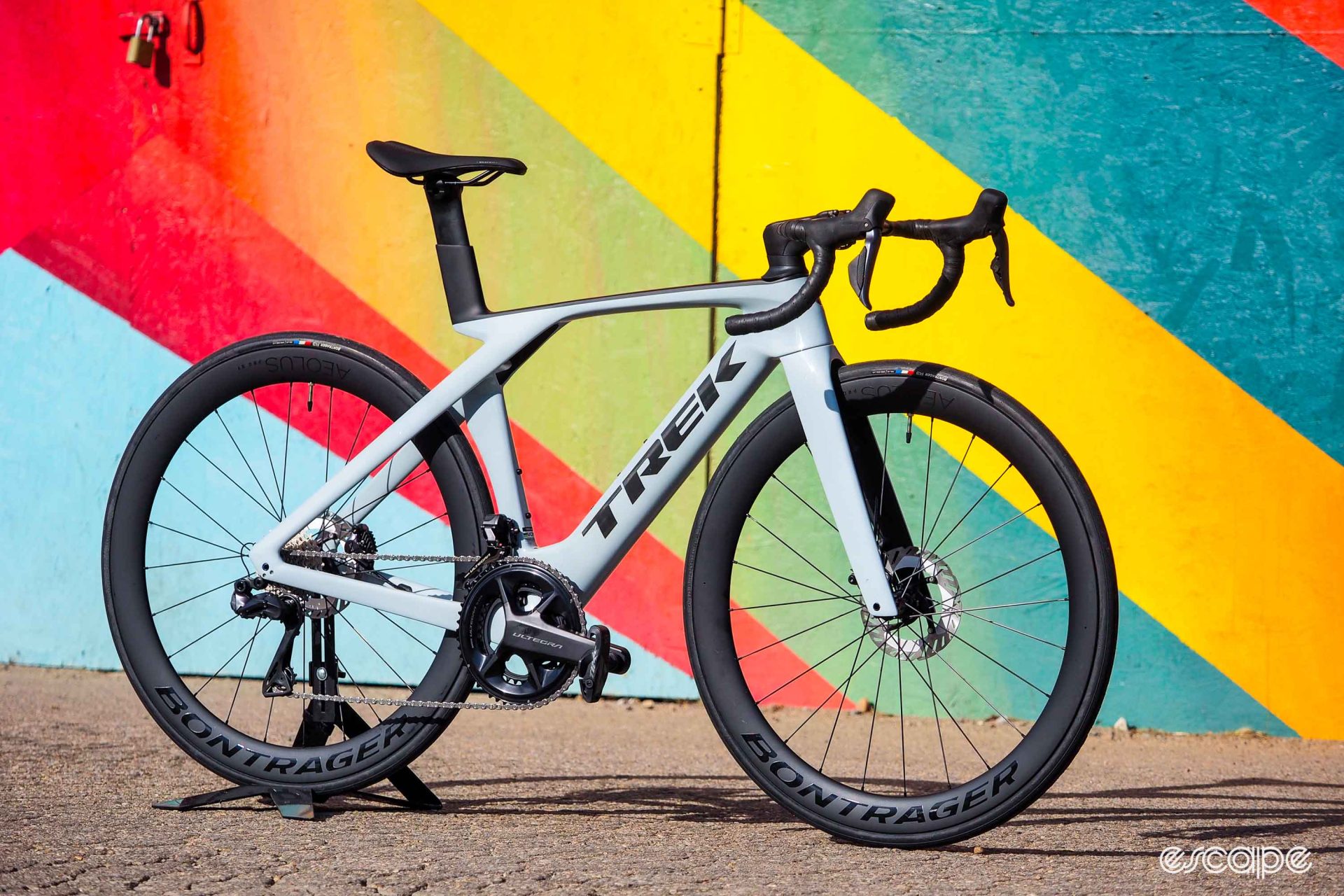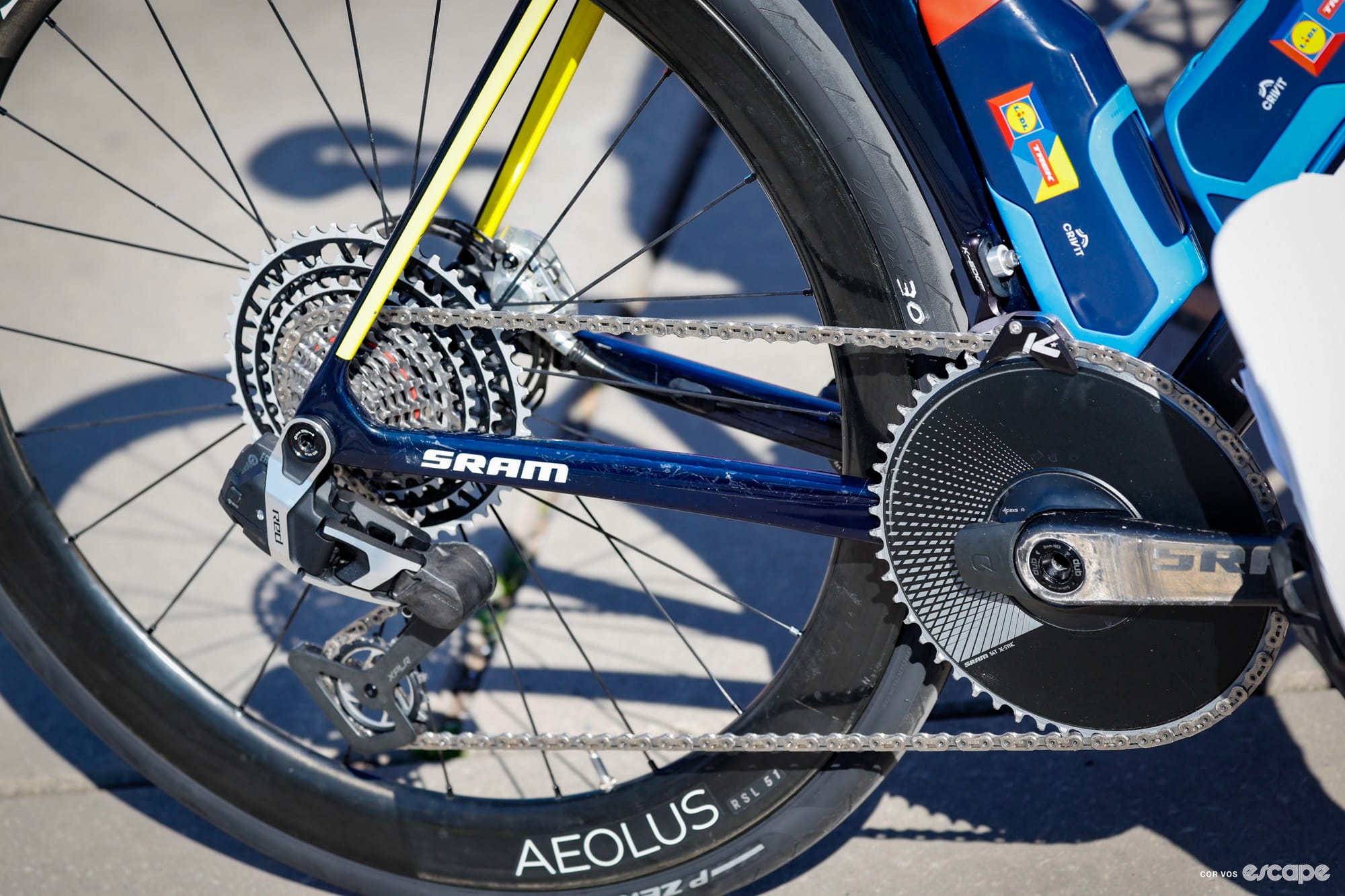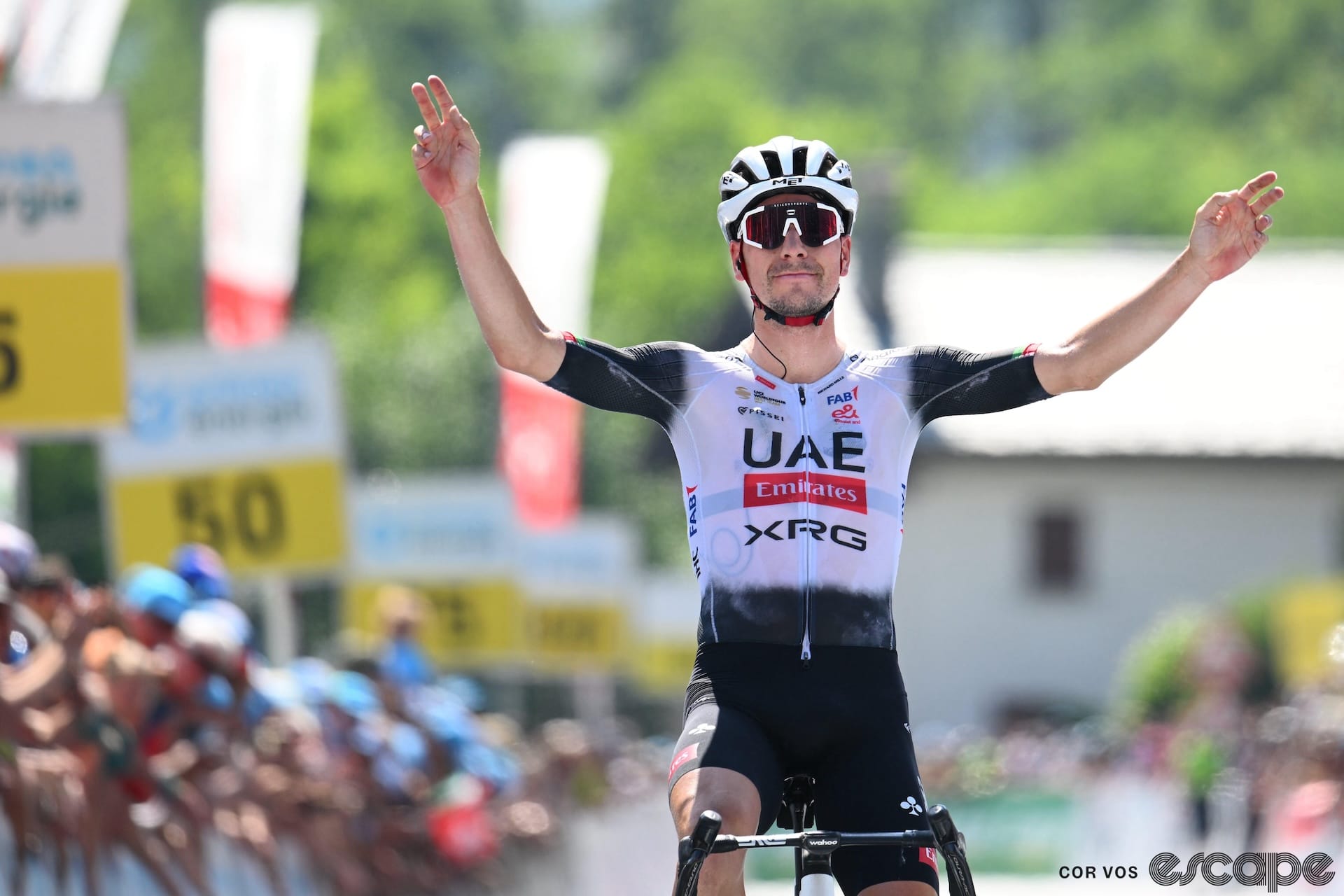Second-tier models – ones that look the same, but use less-expensive materials and parts to lower the cost – typically aren’t nearly as exciting as their more premium cousins. But in the case of the Trek Madone SL vs. the Madone SLR, the difference in performance is so small – and the difference in cost so dramatic – that it’s hard not to consider the “lesser” version to be the one to get, even if you have the money for the flagship model.
Good stuff: Heaps lighter than before, tangibly speedy, surprisingly good ride quality, superb handling, lots of tire clearance, user-friendly two-piece cockpit, sharp lines.
Bad stuff: Polarizing IsoFlow aesthetics, poor weathersealing, narrow wheels and tires.
An aero primer
Trek went perhaps a little too far down the “aero and comfy” rabbit hole with the 6th-generation Madone, which was impressive in the wind tunnel and surprisingly comfortable to ride, but also among the heavier options in the category what with its complicated (and hefty) IsoSpeed pivoting seatmast design. With the latest iteration of the Madone launched last June, Trek supposedly improved the bike’s aerodynamic performance while also simplifying the structure, ditching IsoSpeed in favor of an even more radical-looking seat cluster configuration called IsoFlow.
In short, IsoFlow comprises a giant hole where the seat cluster would normally be. The seat tube stops just shy of its normal height, the seatstays bypass that area entirely and connect further forward on the top tube, and the semi-integrated seatmast is now cantilevered off the back of the top tube like the business end of an ice hockey stick.
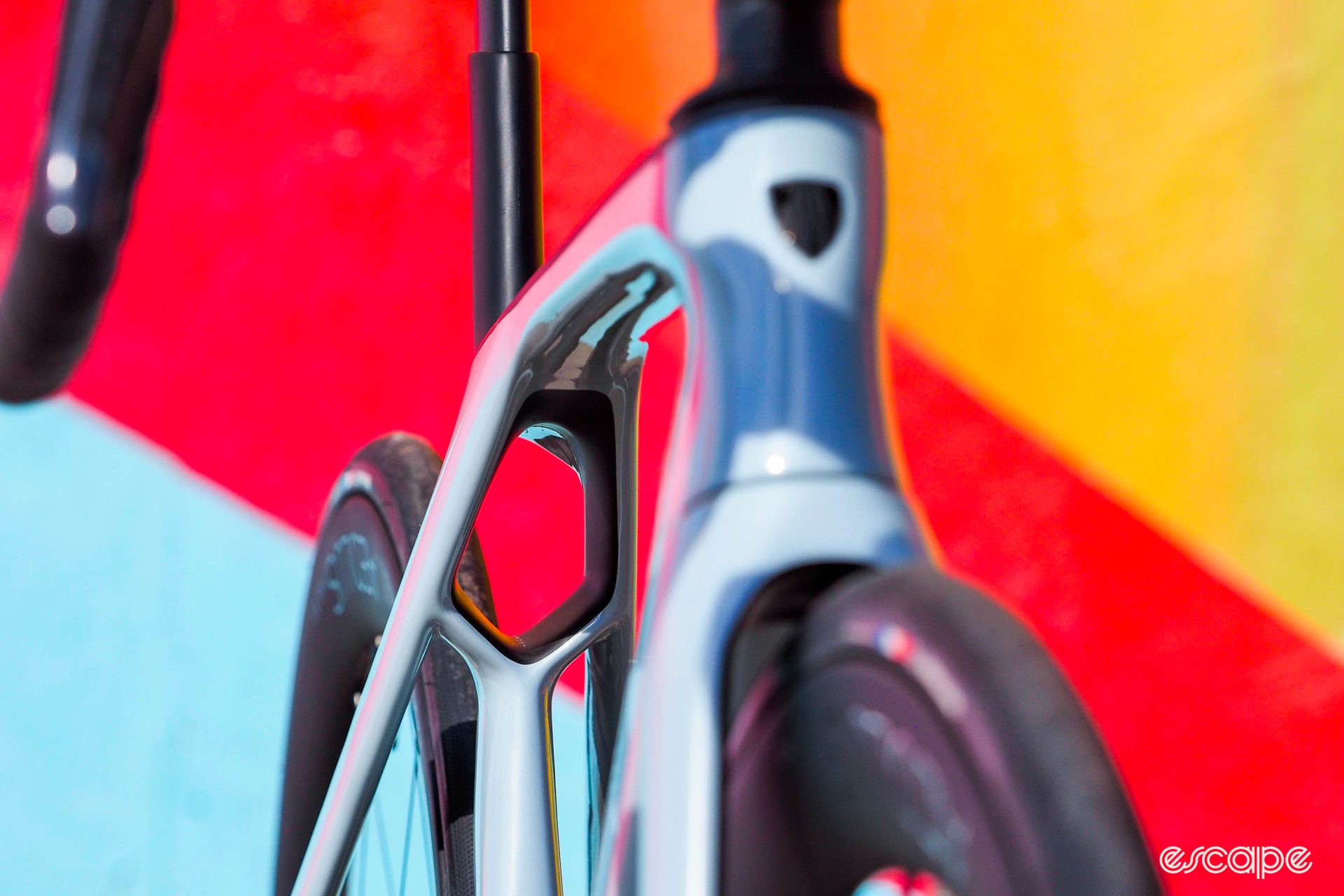
Trek claims IsoFlow yields smoother airflow through that area, saves almost 150 g relative to the outgoing Madone (for the flagship SLR trim, at least), and – thanks to some clever carbon tuning in that area – also supposedly provides a better ride quality than you’d otherwise expect from such chunky frame proportions.
Trek has been one of the biggest proponents of Kamm-tail tube profiles since first using it on the Speed Concept way back in 2009, and those flat-backed shapes are very much alive and well on the latest Madone – if anything, they’re deeper than ever thanks to recent revisions in the UCI technical guidelines. The down tube, seat tube, seatstays, and fork blades are all more aggressively shaped than ever, and the head tube and cockpit areas are particularly sleek so as to keep air flowing cleanly over the carefully sculpted surfaces.
The revised frame shape only accounts for about half of the new Madone’s claimed aerodynamic performance gains, however. The other half comes from the rider – or, more specifically, handlebars that have been radically narrowed by about 3 cm across the board in order to place the rider in a more aerodynamic position.
Taking all of these factors together, Trek is touting some bold performance gains, saying the 7th-generation Madone frameset module (including the frame, fork, cockpit, and seatpost) is not only about 300 g lighter in total than the 6th-generation one, but also about 19 watts more efficient aerodynamically in a wind tunnel (at 45 km/h), which Trek says translates to a 60-second advantage per hour at that speed.
A single letter with small differences
All of those changes sound well and good, but keep in mind that when those announcements were made in June 2022, they only applied to the flagship Madone SLR models, whose retail prices start at US$8,000 / AU$11,800 / £7,600 / €8,200 (for a Shimano 105 Di2 build!) and top out at a whopping US$13,200 / AU$19,000 / £14,500 / €15,700 with a SRAM Red AXS groupset. More power to you if you can swing that kind of cash, but for most performance-minded riders, that’s just not in the cards.
Trek has for years offered a less-expensive version in the Madone SL, but given how the 6th-generation Madone SLR was already overweight, the Madone SL was a veritable boat anchor. For example, a sample I tested a couple of years ago with a mid-range SRAM Force AXS wireless groupset and Bontrager’s reasonably light Aeolus Pro 51 wheels came in at a whopping 8.59 kg (18.94 lb), a tough pill to swallow, aero advantage or not.
Thankfully, the weight loss plan introduced with the Madone SLR now also carries over to the recently updated Madone SL. Despite the lower-grade carbon fiber blend here, claimed weight for a 56 cm Madone SL frame is now 1,200 g, plus 476 g for the matching fork. That's still 208 g more than a comparable Madone SLR frameset, and hardly a featherweight given the selection of sub-800 g options now on the market, but still pretty good all things considered. If you take Trek’s aero claims at their word, those extra grams aren’t going to matter much at all against the stopwatch on most courses, and realistically speaking, the person considering a Madone these days will probably be more concerned about grams of drag.

Like with the previous Madone SL, this one again uses the exact same shape as the Madone SLR, so its aerodynamic performance should be identical, with one exception: the cockpit. The Madone SLR uses Trek’s latest one-piece carbon fiber handlebar/stem, but the Madone SL uses a more conventional two-piece setup that includes an aero-focused forged aluminum stem with a separate aero-shaped carbon fiber handlebar. And whereas the hose routing on the Madone SLR is fully internal, it’s hidden – but still largely accessible – on the Madone SL, with the brake hoses peeking out just a bit underneath the bar clamp before ducking away again into a plastic shroud bolted to the underside of the stem.
Trek says this equates to a six-second hit to the Madone SL’s aerodynamic performance relative to the Madone SLR. Don’t worry; I’ll get to that soon enough.
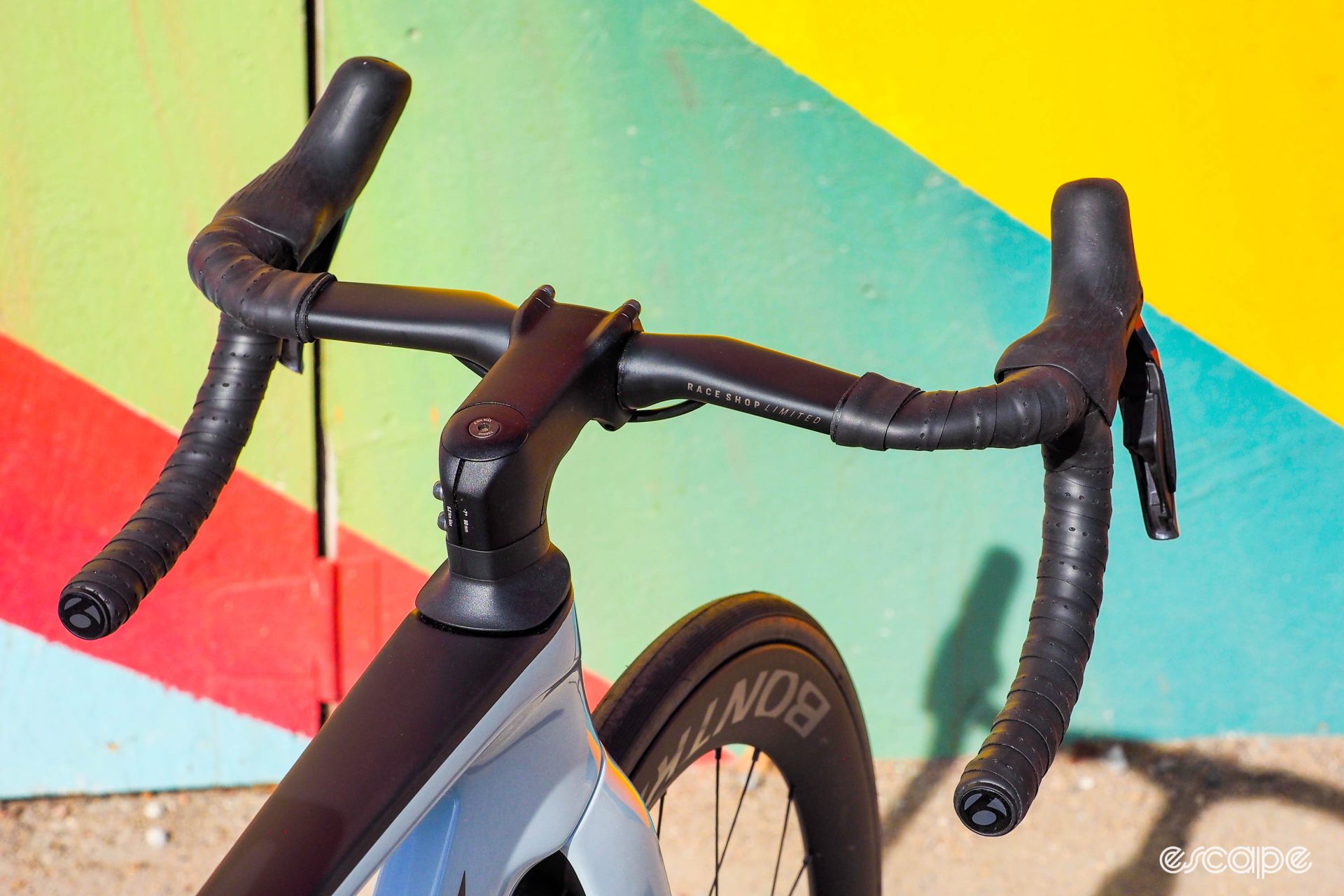
Trek also says there’s a negligible difference in chassis stiffness – less than 5% – and ride quality shouldn’t take much of a hit, either. If anything, the lower grade of carbon fiber in the Madone SL might even make that bike more comfortable than the Madone SLR, not less.
Aside from the different carbon fiber blend and the two-piece cockpit, the rest of the feature list is identical, including Trek’s slightly modified T47 oversized and threaded bottom bracket shell, a built-in chain keeper, and the brand’s now-signature semi-integrated seatmast. Unlike true integrated seatposts, though, this one doesn’t have to be cut and will still squeeze into most standard travel cases, and Trek has gone to great lengths to ensure a proper rider fit. If the included proprietary seatpost doesn’t quite accommodate your position, Trek also offers a longer option – each with 65 mm of total height adjustment – and both are available in 0 mm and 20 mm offsets. Given the rather goofy component dimensions, Trek thankfully has a broad range of dedicated front and rear accessory mounts to accommodate stuff like lights and computers, too.
Both versions are also offered in eight sizes: impressive for a mainstream brand.
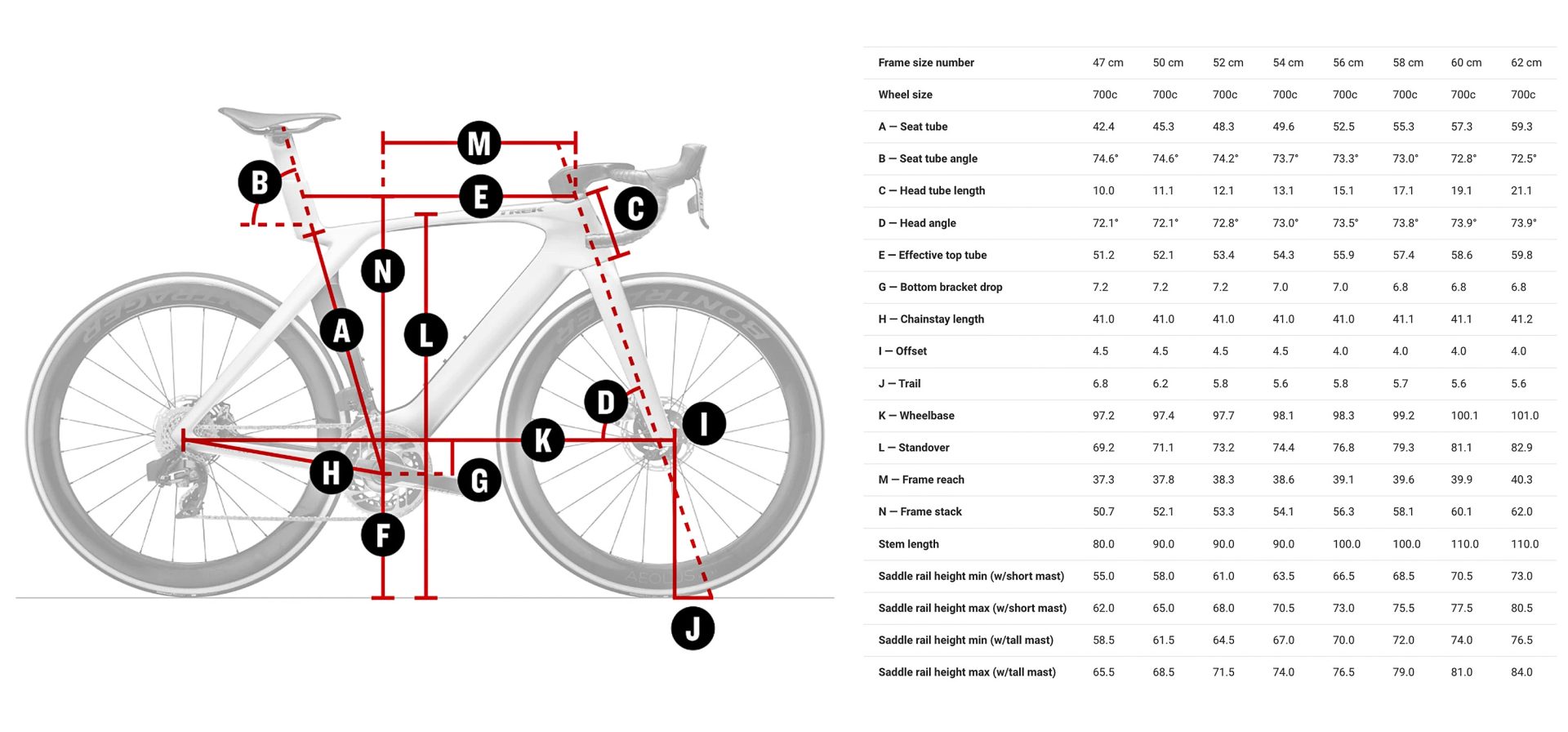
Otherwise, the differences between the Madone SL and Madone SLR simply boil down to more economical build kits.
My Madone SL 7 test sample is the nicer of the two complete Madone SL bikes Trek offers currently, and comes equipped with a complete Shimano Ultegra Di2 2x12 wiredless electronic groupset, Bontrager Aeolus Pro 51 carbon fiber clincher wheels wrapped with 25 mm-wide Bontrager R3 Hard-Case Lite tires, a Trek RCS Pro forged aluminum stem, Bontrager RSL Aero carbon fiber handlebar, and a Bontrager Aeolus Comp snub-nosed saddle.
Actual weight for my 52 cm sample is 8.01 kg (17.66 lb), without pedals or accessories, and retail price is US$6,500 / AU$10,300 / £7,500 / €8,000.
You know what feels fast? Money left over in my pocket
Having fun on a road bike largely revolves around going fast – and holy cow, is the Madone SL fun in that respect.
For however many full-blown aero road bikes I’ve ridden over the years, it’s still shocking every time I get on a particularly good one and can so immediately feel – feel! – how much faster they are. It’s startlingly easy to hit – and hold – high speeds, but it’s also tangibly easier to just casually cruise if that’s what you feel like doing that day. The beauty is that the option to go fast is always there if you want it, and even after however many years I’ve done this, that thrill never goes away.
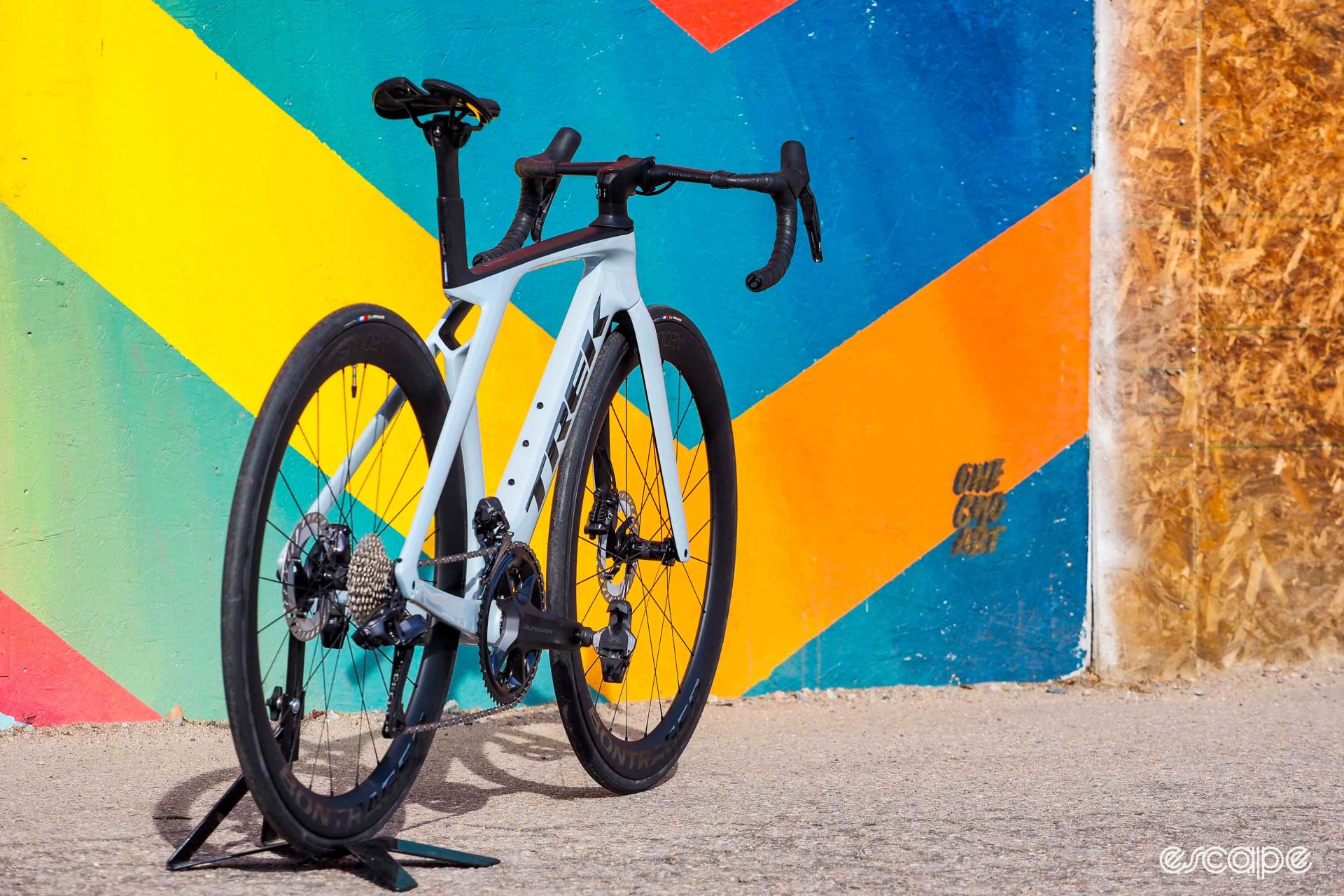
Those huge tube sections and all that material are also put to good use in terms of chassis stiffness. It’s wonderfully responsive when you lay down the watts, and it feels every bit like the race bike it’s supposed to be. High-speed jumps are where the Madone SL excels given that aerodynamic shape, but the combination of that stiffness and the new weight loss make it a surprisingly good partner on steep climbs, too. That rigidity also feels nicely balanced from tip to tail with no section of the frame coming across as more flexible than another. The Madone SL obviously doesn’t feel as light heading uphill as something truly feathery, but sub-8 kg is still pretty darn light, and if speed is truly what you’re after, the aerodynamic benefits should more than make up the difference.
I fully expected my test sample’s 36 cm-wide bars (at the hoods) to feel very weird – and to be fair, they did, but literally only for the first few minutes, after which I almost completely forgot about it. I did miss the additional leverage of my usual 40 cm-wide bars on particularly steep climbs, but that was about it. Consider my eyes opened.
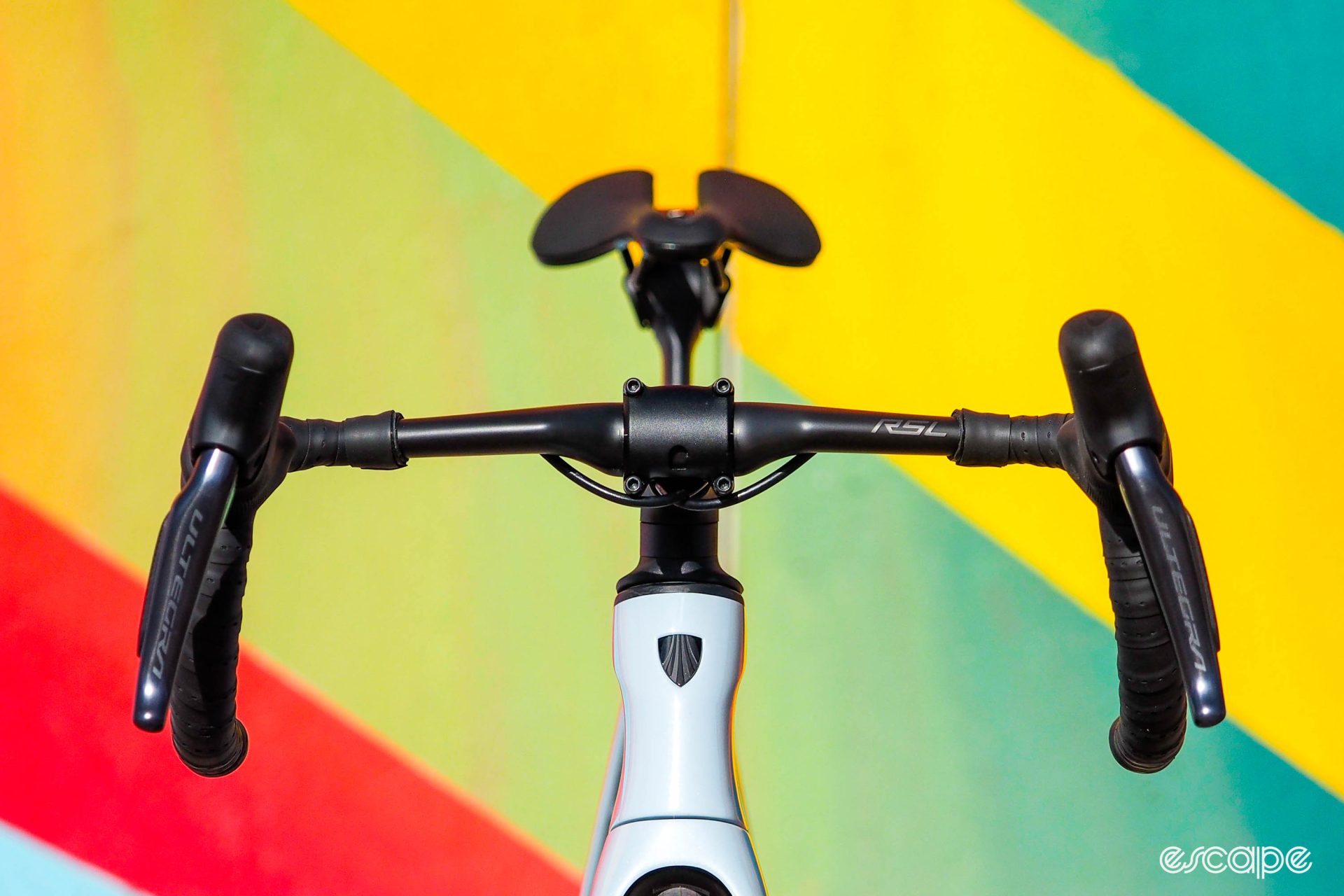
That the Madone SL efficiently cuts through the air and feels fast doing so shouldn’t be a big surprise. The old one was known to be very aerodynamic, and this one is supposedly a big step up from there. But a big aspect of being fast on the road is also being comfortable, and more specifically, that you are able to achieve and maintain an efficient position while also producing a lot of power.
And that’s where the Madone SL’s two-piece cockpit comes in.
One-piece cockpits may look cool, but I don’t always get along with them. Even if the bar width and stem length is correct, sometimes the bend just isn’t my favorite, or the cross-section doesn’t feel right in my hands, or the drop dimension isn’t quite there, or whatever. More often than not, I find myself having to adapt to the bar since there aren’t any other options available instead of the other way around.
The two-piece setup on the Madone SL may be slower than the fancy (and lighter, and far more expensive) one-piece cockpit on the Madone SLR, but being able to easily adjust and tune the front end to my liking is something I find invaluable. In the case of the Madone SL, the stock bar actually worked quite well for me: an appropriately deep drop with a semi-anatomic bend, a nice flat platform behind the hoods to rest your wrists, and tops that are aero-profiled but still refreshingly comfortable to hold.
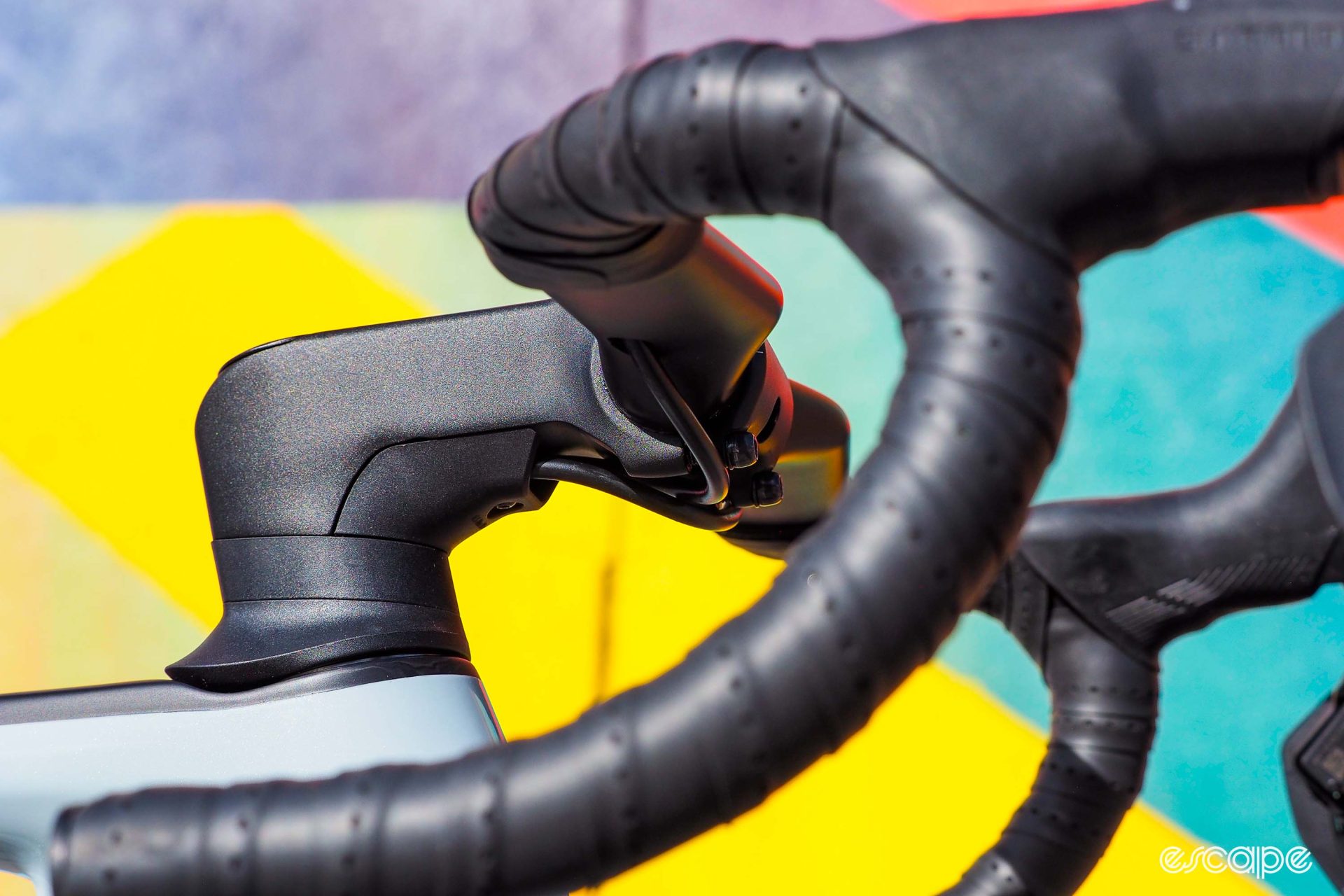
The stem, on the other hand, was a hair too short given my shorter-legs-longer-torso proportions. On a one-piece setup – particularly one with fully internal routing – even a simple adjustment like that on an internally routed one-piece setup is literally hours of work. And while Trek may offer the fancier one-piece setup in fourteen different size combos, you still have to buy the thing (unless you go through Trek’s Project One custom program and pick the right one from the start). But on the Madone SL, it took me all of ten minutes (and many dealers would likely be willing to swap the stem for you). Oh, you also want to try lowering the stem for a bit before cutting the steerer? Just stack some totally normal round spacers on top for a bit. Brilliant.
Such simple things shouldn’t be so refreshing, but these days, they are.
Speaking of comfort, the Madone SL rides much better than I’d expected. While the ride quality is on the firmer side, it’s very well damped and also effectively takes the edge off of bigger impacts. Tactile feedback is still superb, too, and it’s striking how well the front tire communicates grip levels through the bars without feeling harsh. And as much as I enjoyed the cushiness of the old IsoSpeed system, I have to admit that there seems to be something to Trek’s claims about how the IsoFlow mast flexes over bumps. I’m not sure what it’d feel like under someone appreciably heavier than my modest 72 kg (159 lb), or how well that sort of cantilevered arrangement will hold up over time, but I’ll be damned if it isn’t impressively comfy.
If you are after an even softer ride, don’t forget there’s room for tires with a measured width up to 33 mm – or even more if you’re willing to stomach the risk of running less than 4 mm of clearance at the chainstays.
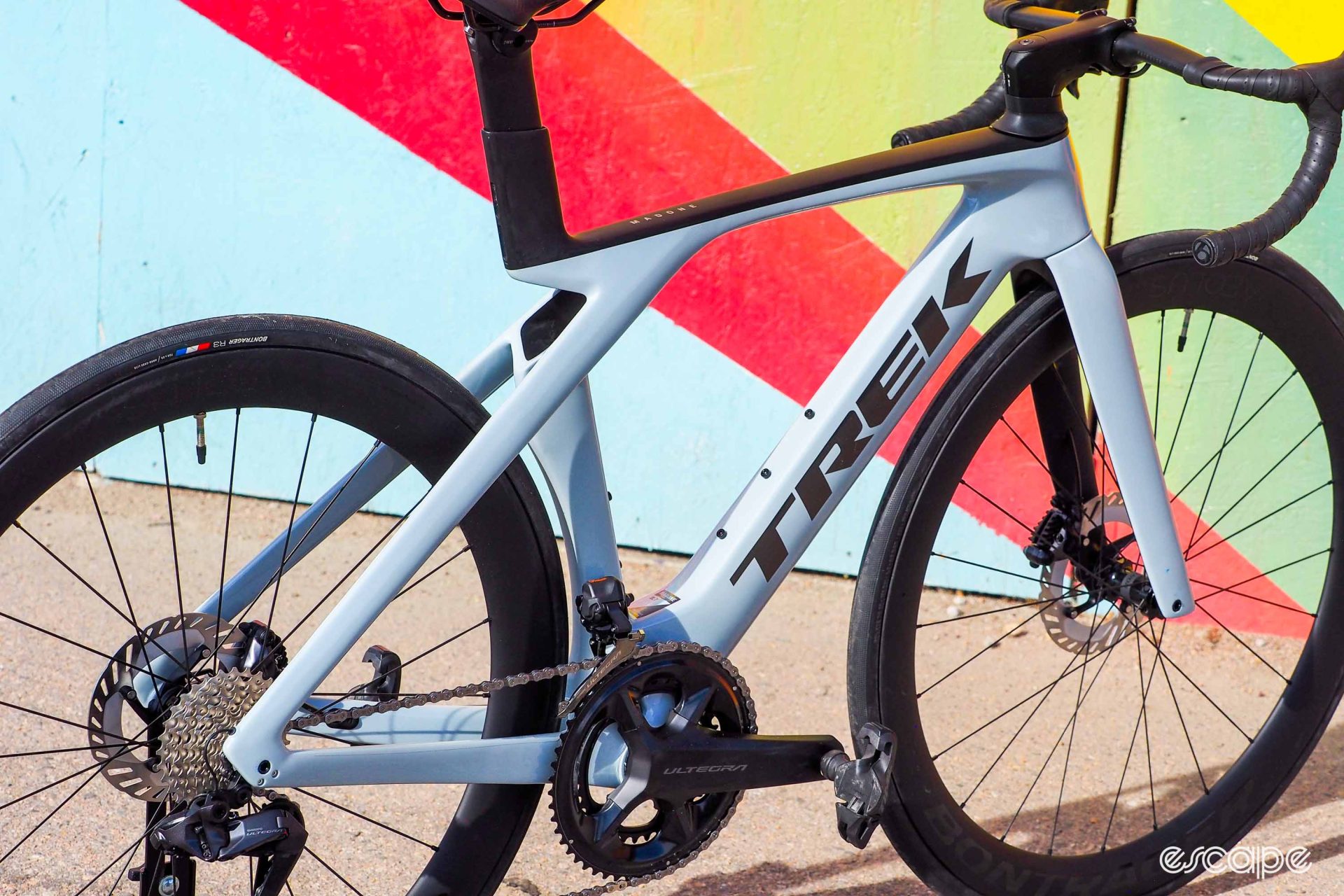
Handling is another bright spot, as the Madone SL feels much like every other Madone I’ve ridden over the years. The steering geometry is quick and incredibly intuitive without ever feeling twitchy or nervous. It initiates turns with but a flick of the wrists and just a little tilt of your hips, falls naturally toward the apex, and then readily snaps back upright when it comes time to rocket out of the corner, never fighting you at all along any point of the process. High-speed stability is fantastic, too, with not a hint of drama – just relax and keep it pointed where you want to go. That magical combination is something I’ve long enjoyed about the Madone, and I hope Trek never changes it.
One change I’m quite fond of, however, is the new Madone SL’s edgier aesthetic. Gone is the incongruent mix of shapes on the previous model in favor of a more cohesive assortment of mostly straight edges. I’m particularly keen on how the seatstays, down tube, top tube, and chainstays seem to form a perfect parallelogram in profile. There’s beauty in the symmetry.
That all said, it’s hard for me to ignore some of the Madone SL’s quirks, too.
Trek has engineered a surprising amount of saddle height adjustment considering the relative stubbiness of that integrated seatmast – not to mention the fact you never need to take a hacksaw to your brand-new bike. But the gap between the seatpost and seatmast base is big and unsightly, and the exposed slots further down are begging to suck in whatever’s flying off of your rear tire.
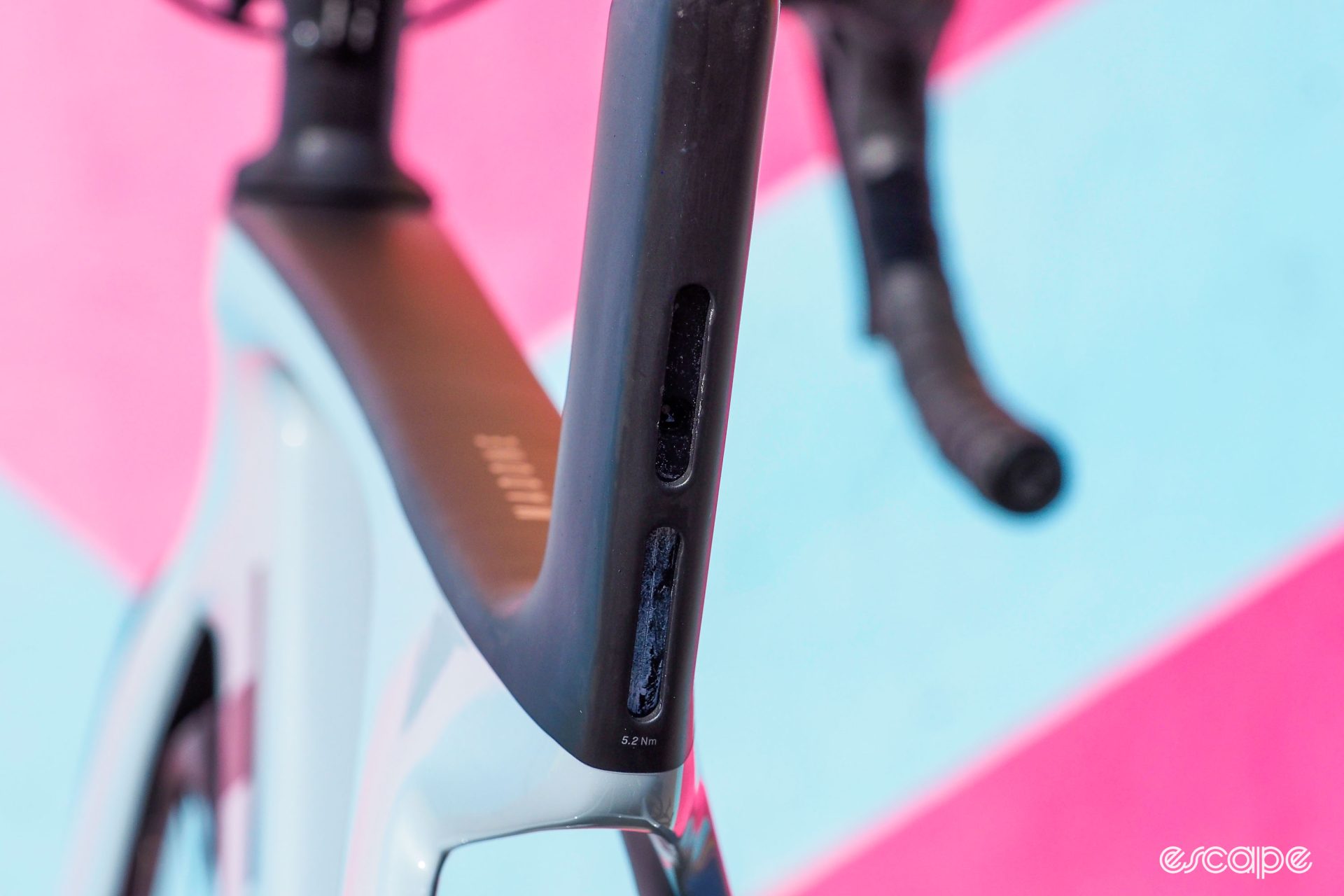
Trek says that area is entirely sealed off from the rest of the frame so you theoretically shouldn’t be regularly filling your bottom bracket area with gnarly road spray. “You could drain any water that may get in there by tipping the bike upside down, and the material is carbon so there wouldn’t be any damage if water got in,” I was told. Ok, but wouldn’t it be better if it wasn’t so easy for water to get in there in the first place? And sure, the main parts are carbon fiber, but let’s not forget all of the metal hardware that fixes those pieces in place – hopefully not permanently someday. Trek has long demonstrated the ability to mold rubber bits in places like wire and hose ports, so it’s a mystery to me why the seatpost area is left so comparatively unfinished.
Speaking of sealing, just as I’ve noticed on other recent Trek road bikes, the upper headset bearing is perilously exposed to the elements. In fact, there’s enough of a gap between the headset cover and the head tube that you can very easily see the shiny (for now) silver of the upper bearing’s outer race. Trek may very well be using stainless bearings (I didn’t bother to ask), but even if so, that only applies to the races – not the bearing balls – and given the enormous cost and hassle of servicing headset bearings with fully internal routing, I want to see headset bearings be more protected, not less.
“We’ve had a high volume of bikes in the field with this same RCS-stem compatible headset bearing cover with similar clearance to the frame for some time (Gen 4 Domane SLR and SL, for example) and have not seen an uptick in the amount of headset service reported by Trek shops,” explained Trek bike product marketing coordinator Jake Glahn.
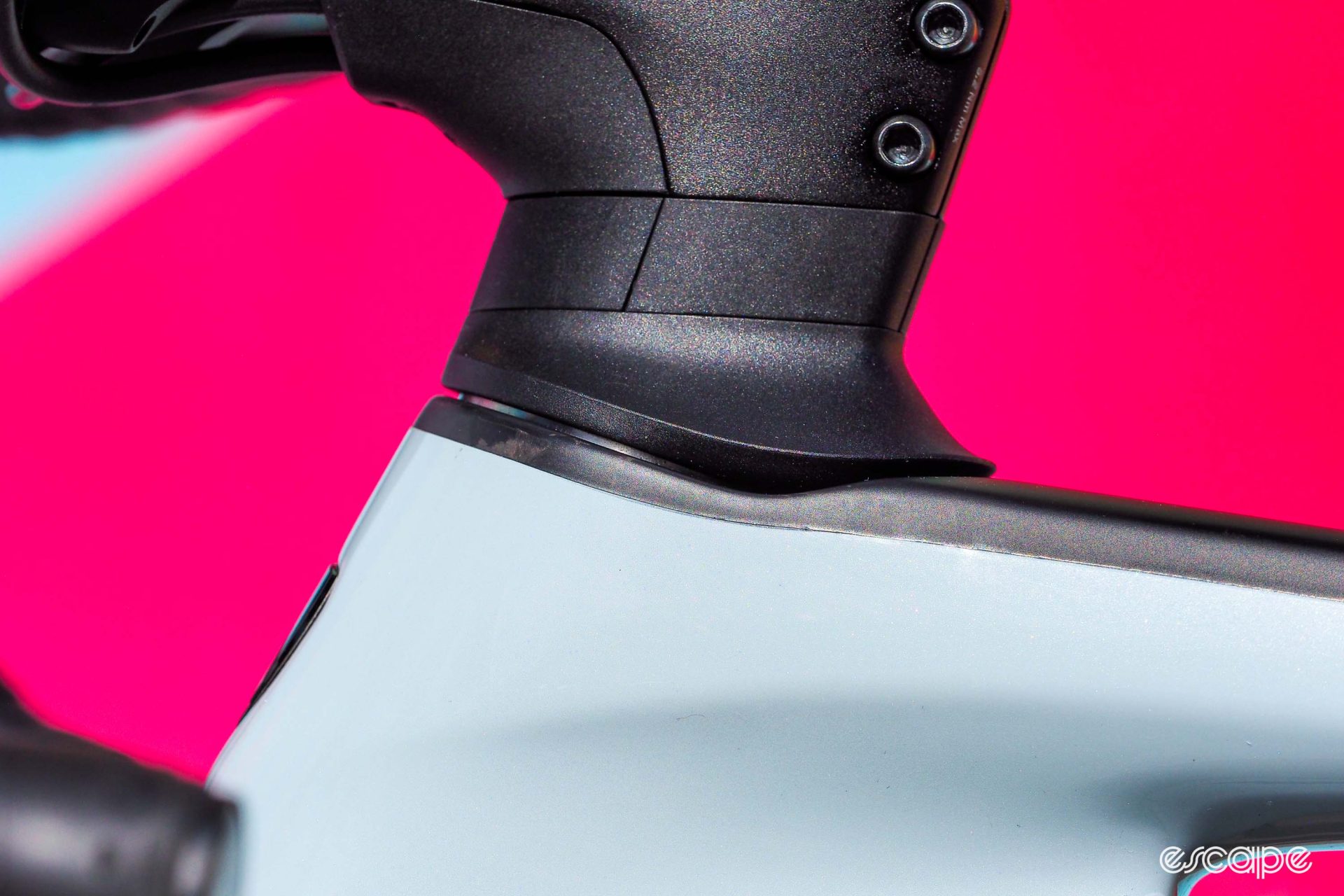
Consider the old shop mechanic in me unconvinced.
Build kit breakdown
Trek has outfitted the Madone SL 7 with solid, no-frills component mix and I have few complaints.
I’ve extolled Shimano’s latest Ultegra Di2 12-speed wiredless groupset several times in the past already, and my opinions haven’t changed. Shift performance is superb front and rear, lever ergonomics are excellent, and the brakes are strong and mostly silent, and with superb lever feel. Riders in particularly hilly environments might want to consider adjusting the 52/36-tooth chainrings and/or the 11-30T cassette, but Shimano’s use of a long pulley cage across the board for this latest generation of Ultegra Di2 at least lessens the financial hit.
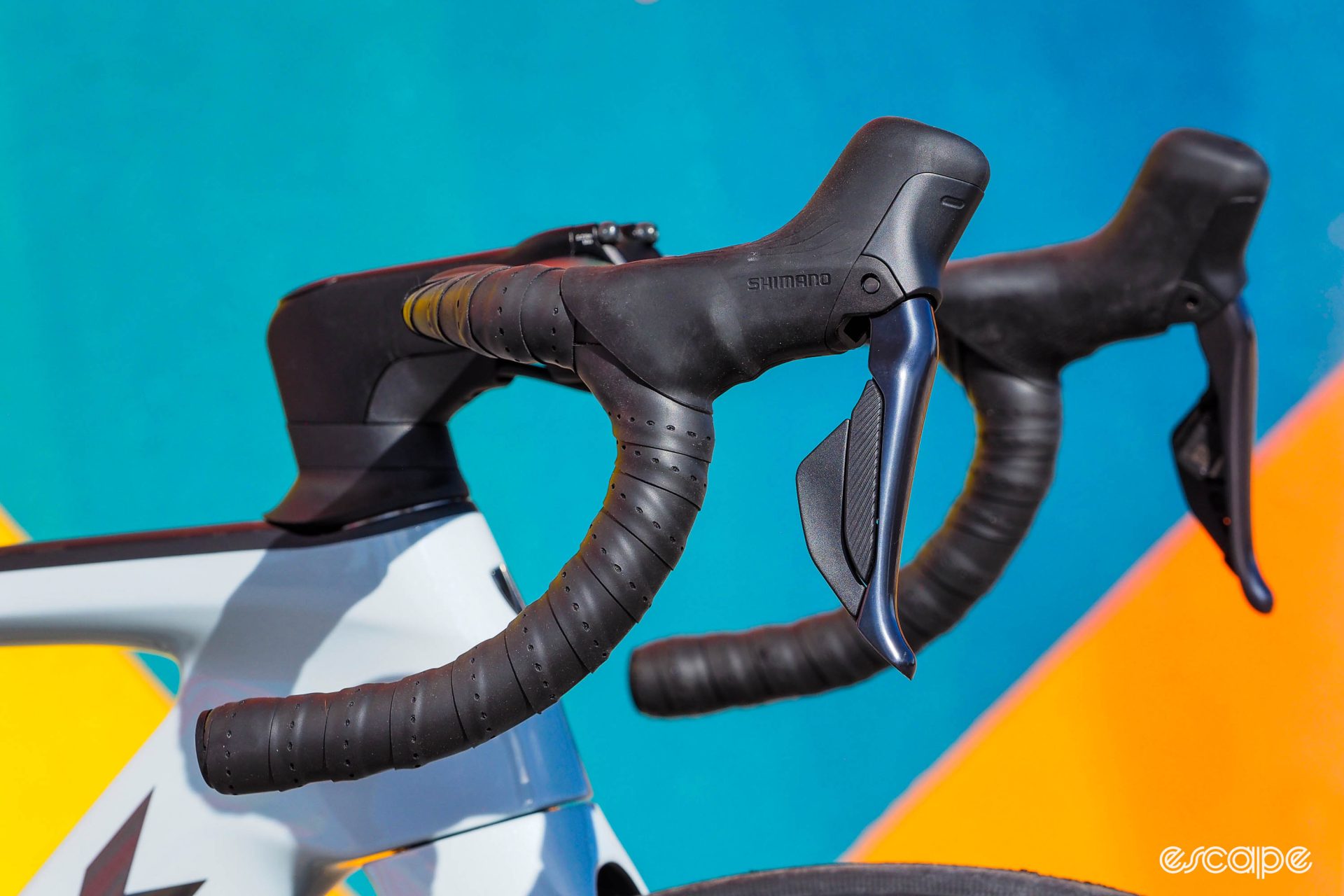
The Bontrager Aeolus Pro 51 carbon wheels share the same rim profile as the higher-end Aeolus RSL 51 – just with different carbon materials – and the DT Swiss 350-based hubs aren’t quite as nice as the RSL version’s DT Swiss 240-based one, either. As such, they’re essentially a wash in terms of aerodynamics, and while the nearly 200 g weight penalty can be noticeable when sprinting or climbing, it’s not a huge deal in the grand scheme of things.
Perhaps more questionable are the Bontrager R3 Hard-Case Lite tires. The tires themselves are perfectly reasonable for everyday use: decent rolling resistance, reassuring grip (at least in dry conditions), seemingly good puncture protection, surprisingly comfortable ride quality. But with even top road pros moving to 28s and beyond, the choice of 25 mm-wide casings here seems a little behind-the-times, even though the actual inflated width is just a hair over 28 mm.
Bumping up a size would enhance the ride quality even further while also improving cornering grip, and there’s certainly room in the frame and fork to spare. The reduced weight of this latest Madone SL was clearly a big story for Trek, though, and my guess is the product manager didn’t want to add any more. But another likely explanation is the shape of the Aeolus Pro 51 rim, which is currently aerodynamically optimized around that tire size. My hunch is the next generation of Aeolus wheel grows in width, at which point I’m guessing the tire size will grow as well.
“25 mm tires are what’s fastest on our current lineup of 23 mm internal-width rims,” Glahn said. “Further, 25 mm tires on 23 mm internal-width rims are what was used in the wind tunnel testing for the Gen 7 IsoFlow Madone, and therefore contribute to the basis of our aero claims for this platform.”
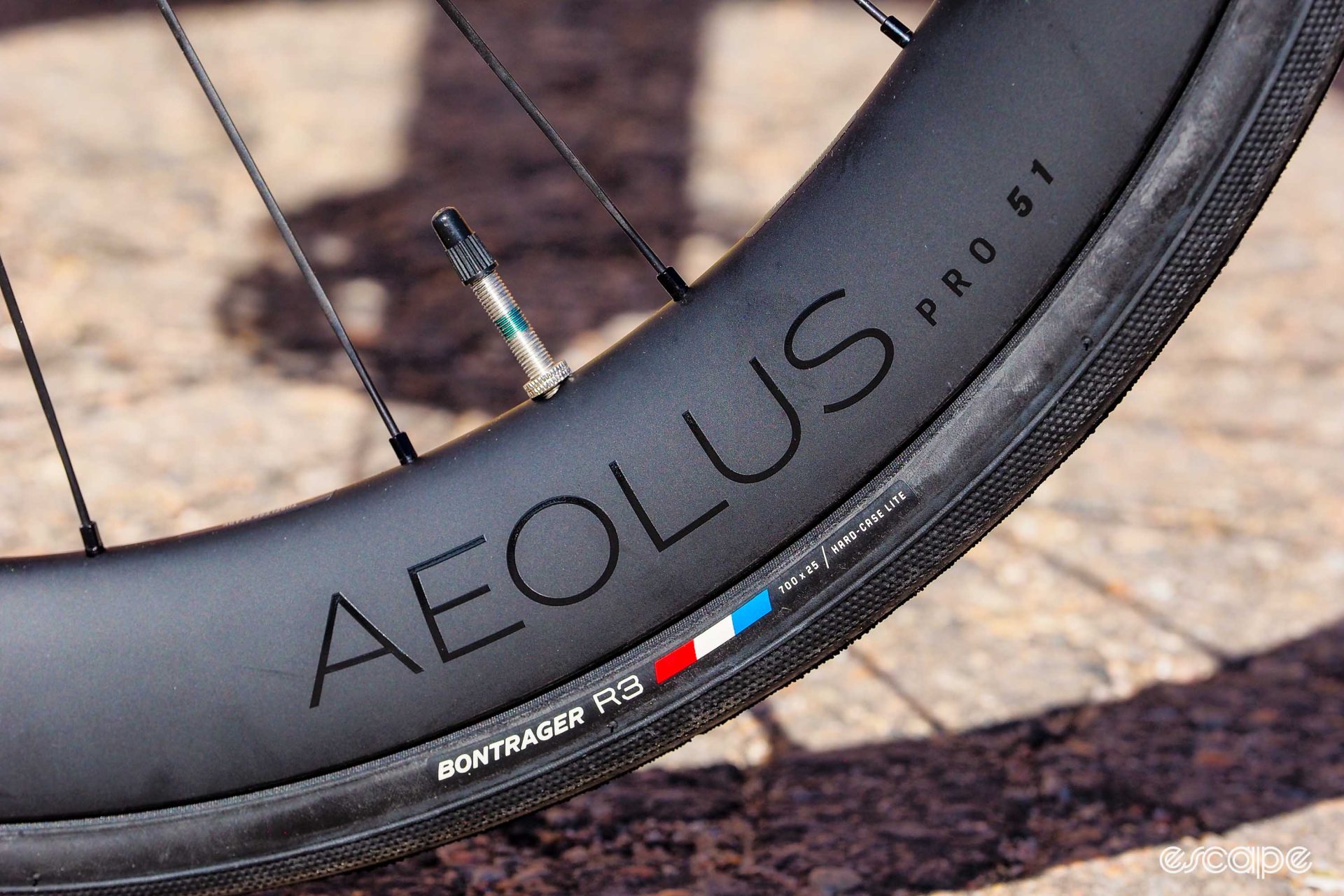
As for the Bontrager finishing kit, the Aeolus Comp saddle is one of my favorites: a sort of hybrid between a Specialized Power and a Pro Stealth, mixing the overall profile of the former with the wider nose of the latter. It seems hard at first, but the high-density padding offers excellent support that arguably gets better as the hours tick by.
I know I’ve already mentioned this, but the Bontrager RSL Aero handlebar was a pleasant surprise. The narrow width is initially jarring, but the overall shape is very comfortable, and there’s excellent wrist clearance when you’re in the drops. Kudos to Bontrager for not merely following trends and slapping a shallow drop on this thing, too. It’s an aero bar meant for performance riding, and so the 80 mm reach and 124 mm drop strike me as just about right. I do wish Bontrager had included more room in the middle for a computer mount, though. Unless you’re running something with a particularly narrow clamp, you’re stuck with some sort of stem-based computer mount.
It’s a winner for me
I haven’t always been a fan of the Madone SL in recent years. Although I loved the aerodynamic performance, it was just too darn heavy. Now that Trek has lopped so much weight off of it, though, it’s not only become much more appealing in my view, but also arguably the one to have if only for that more livable two-piece cockpit design.
If you’re on a budget, yes, there’s also the Madone SLR 6 that comes with Shimano’s new 105 Di2 wiredless electronic groupset, which would more closely align with the old “buy the best frame you can afford” mindset. The complete bike is about 250 g lighter overall than the Madone SL 7 despite the groupset being 130 g heavier, comes with the same wheels, shift quality would be virtually identical, and if the mid-compact gearing of the Madone SL 7 seems a little too tall for your liking, the 105 setup includes a friendlier 1:1 ratio for clawing your way uphill.
But the braking performance of 105 isn’t quite as good as Ultegra, you can’t add remote shifters, and the supplemental upper buttons on Ultegra and Dura-Ace that are so handy for things like controlling your computer are missing, too. And then there’s that potential fit and comfort issue of that Madone SLR’s one-piece front end I’ve already mentioned, plus the Madone SLR 6 is still US$1,500 more expensive.
Get the best frameset you can afford, sure. But when the second-tier one is this close, I know which one I’d be buying.
More information can be found at www.trekbikes.com.
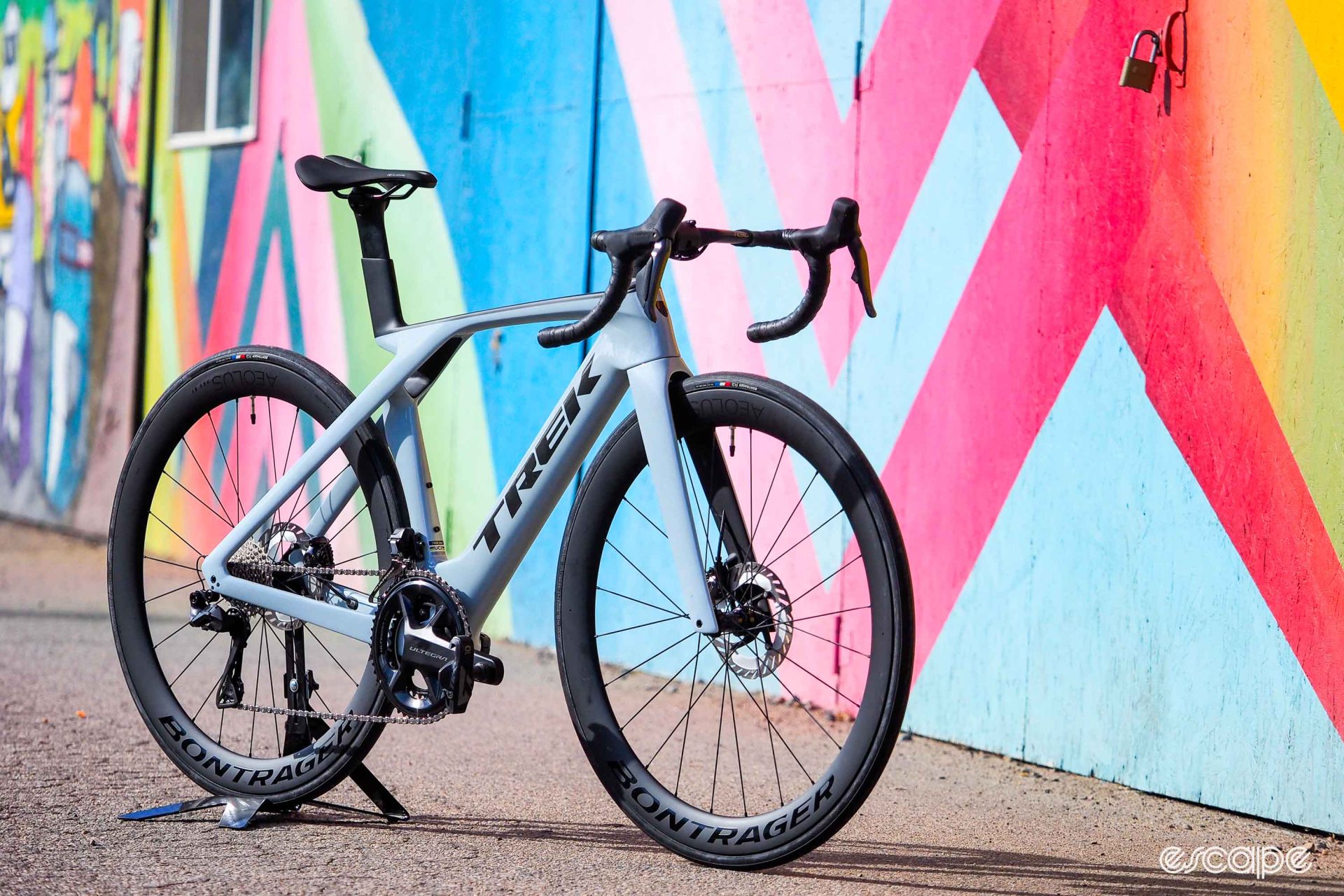
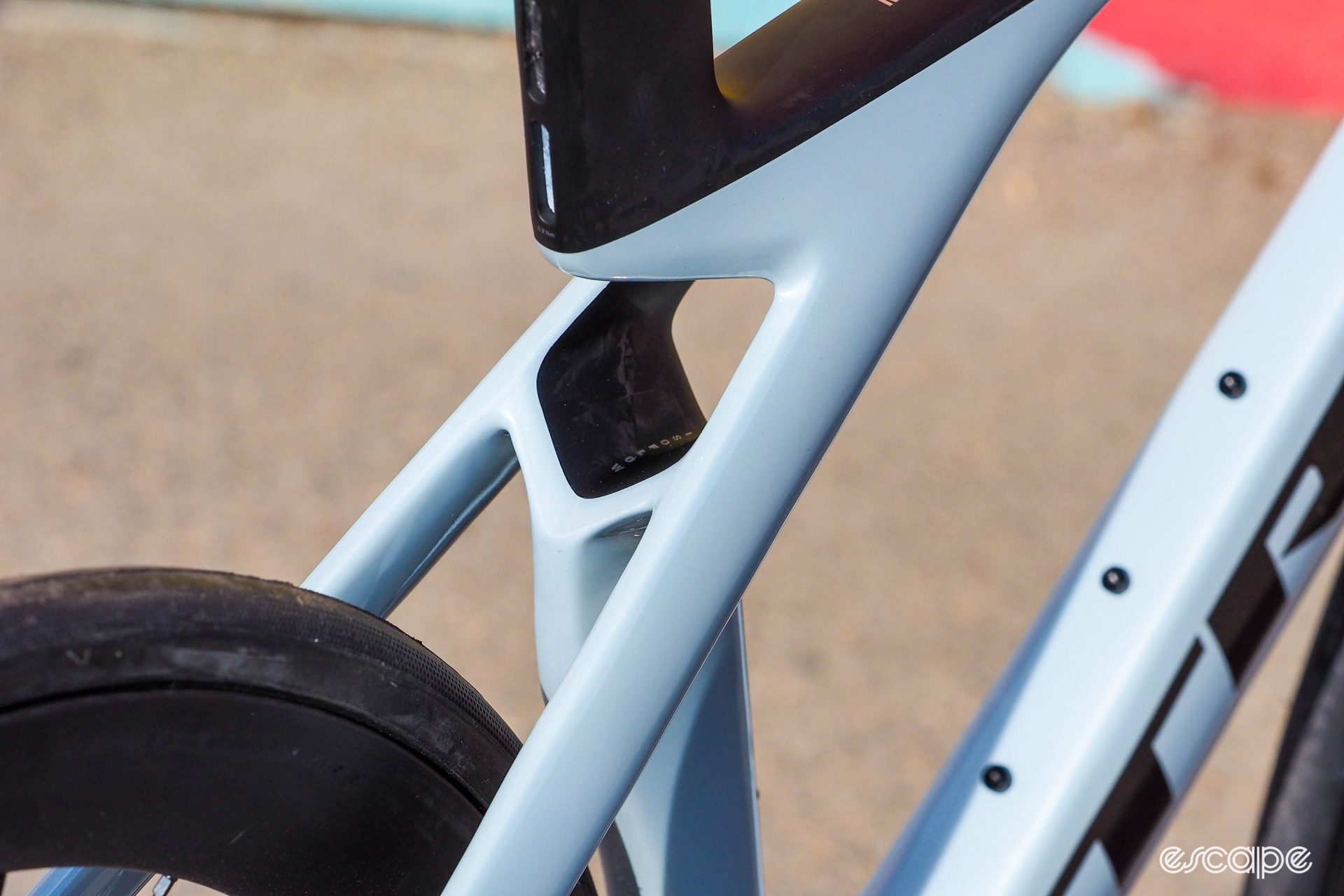
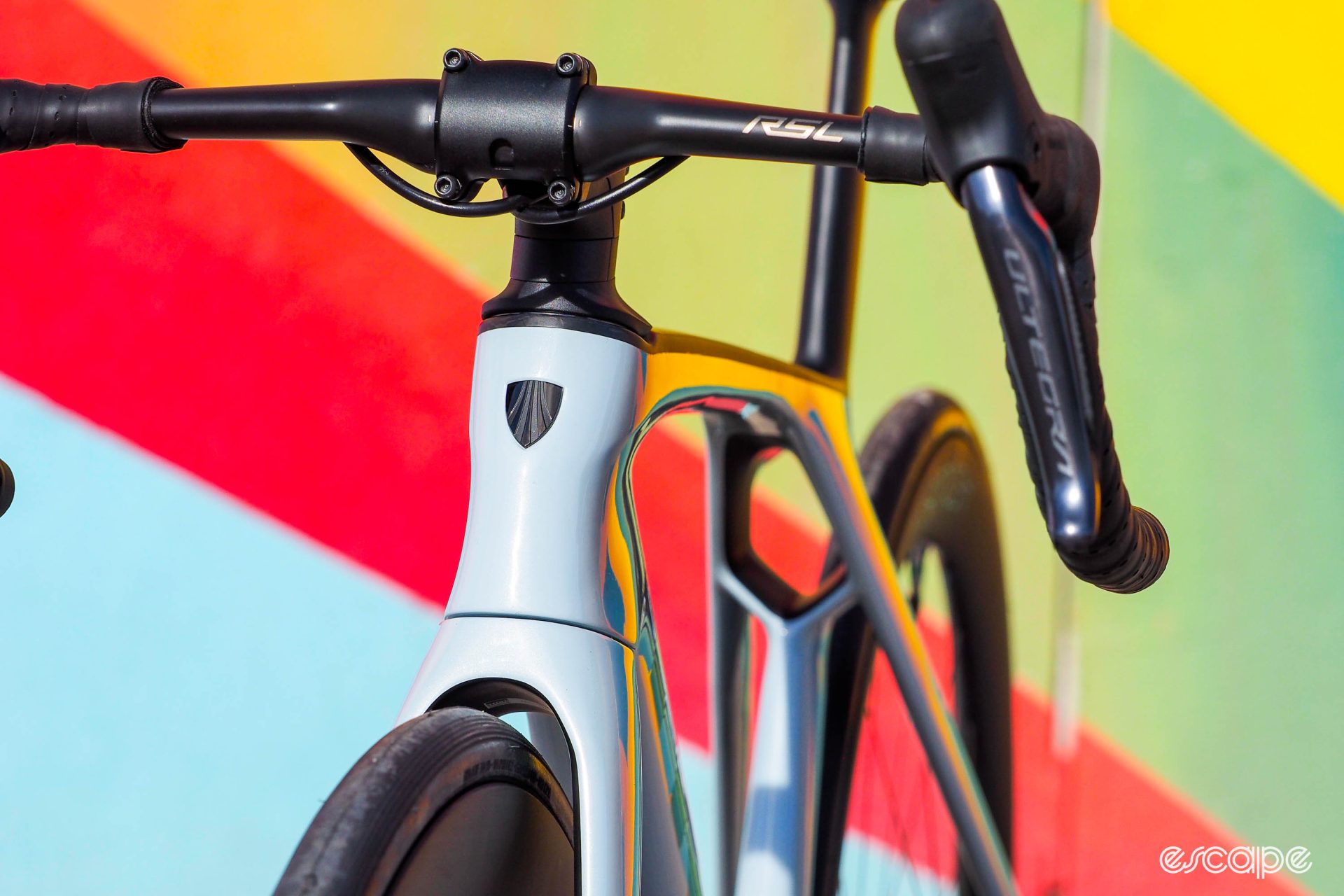
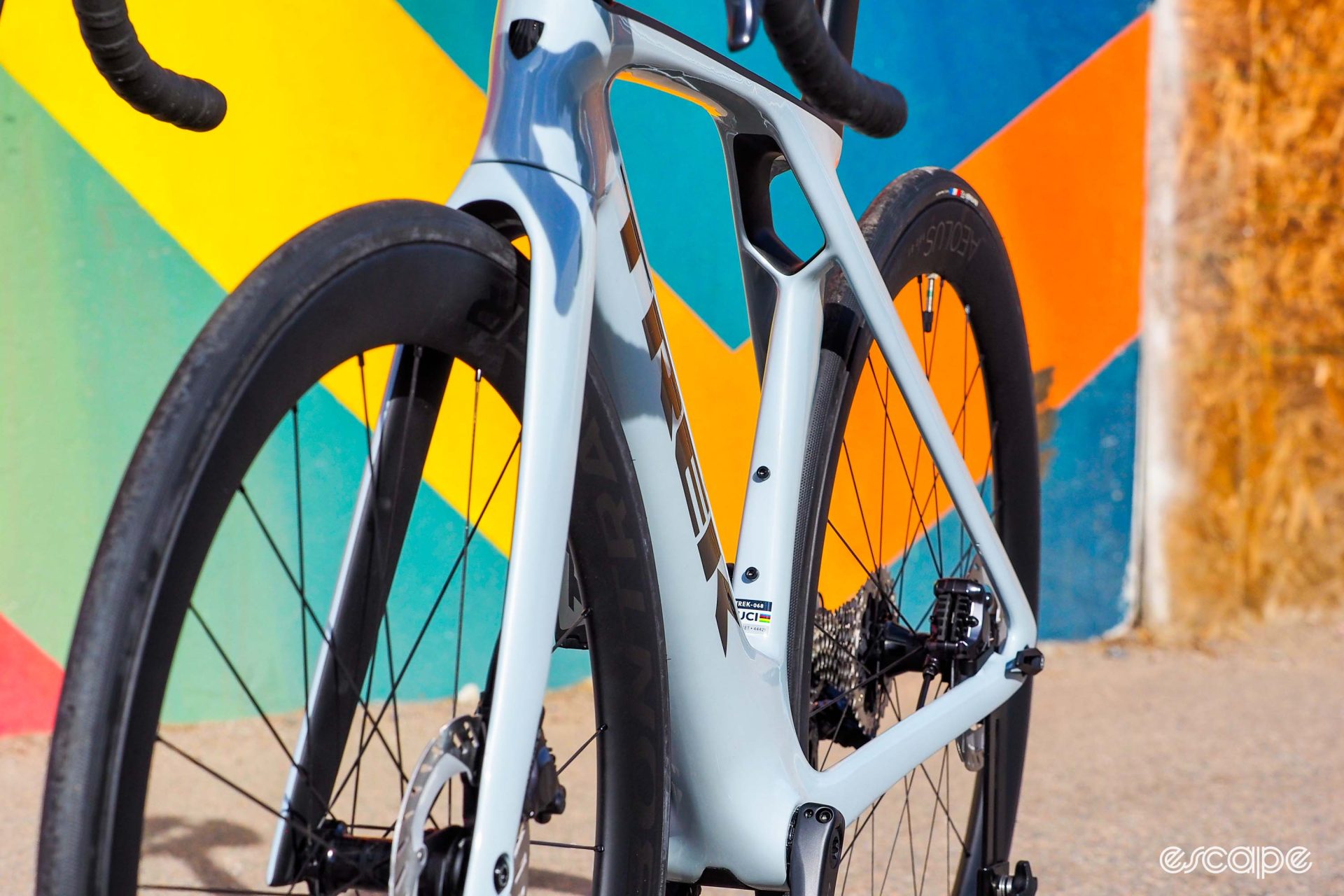
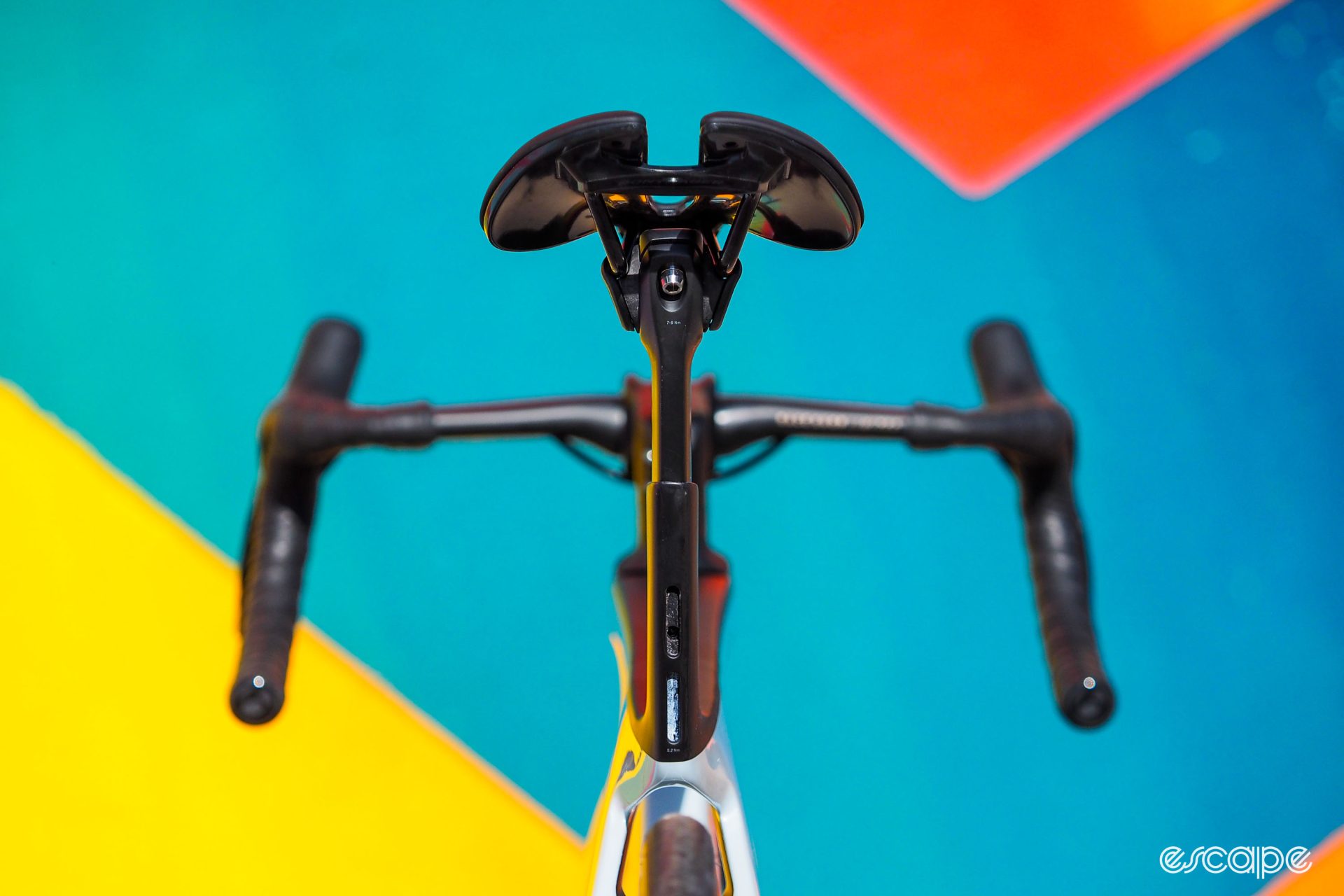
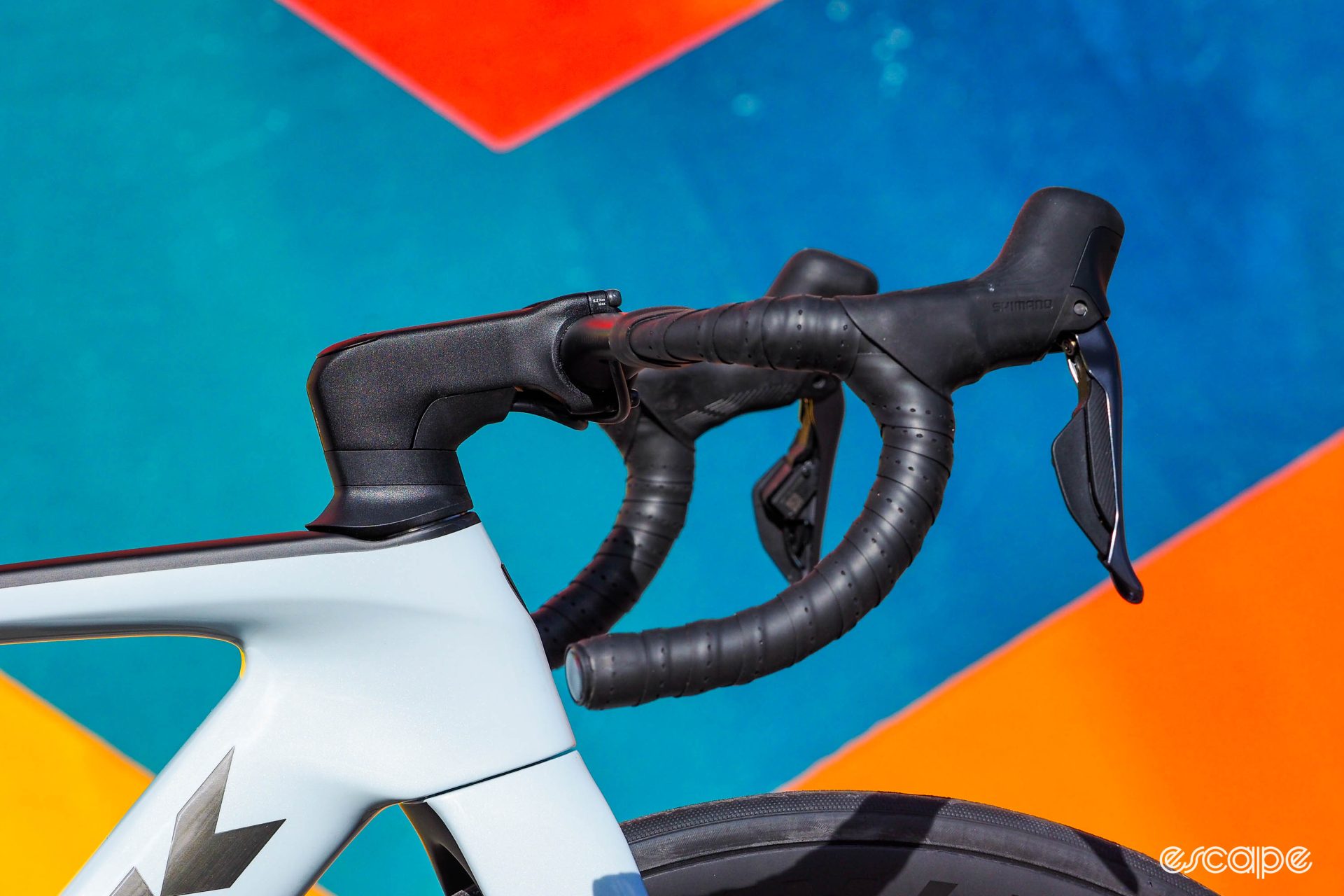
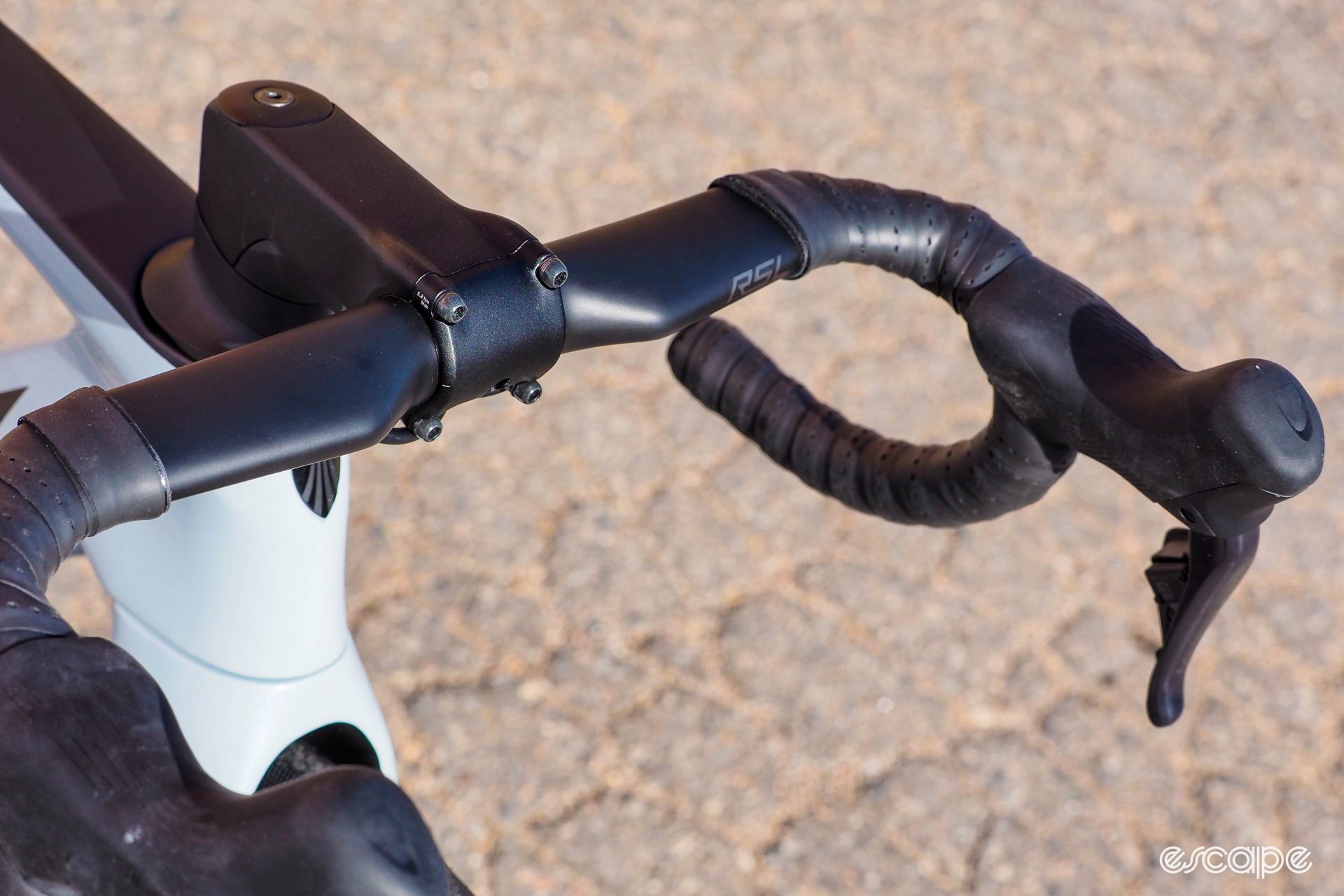
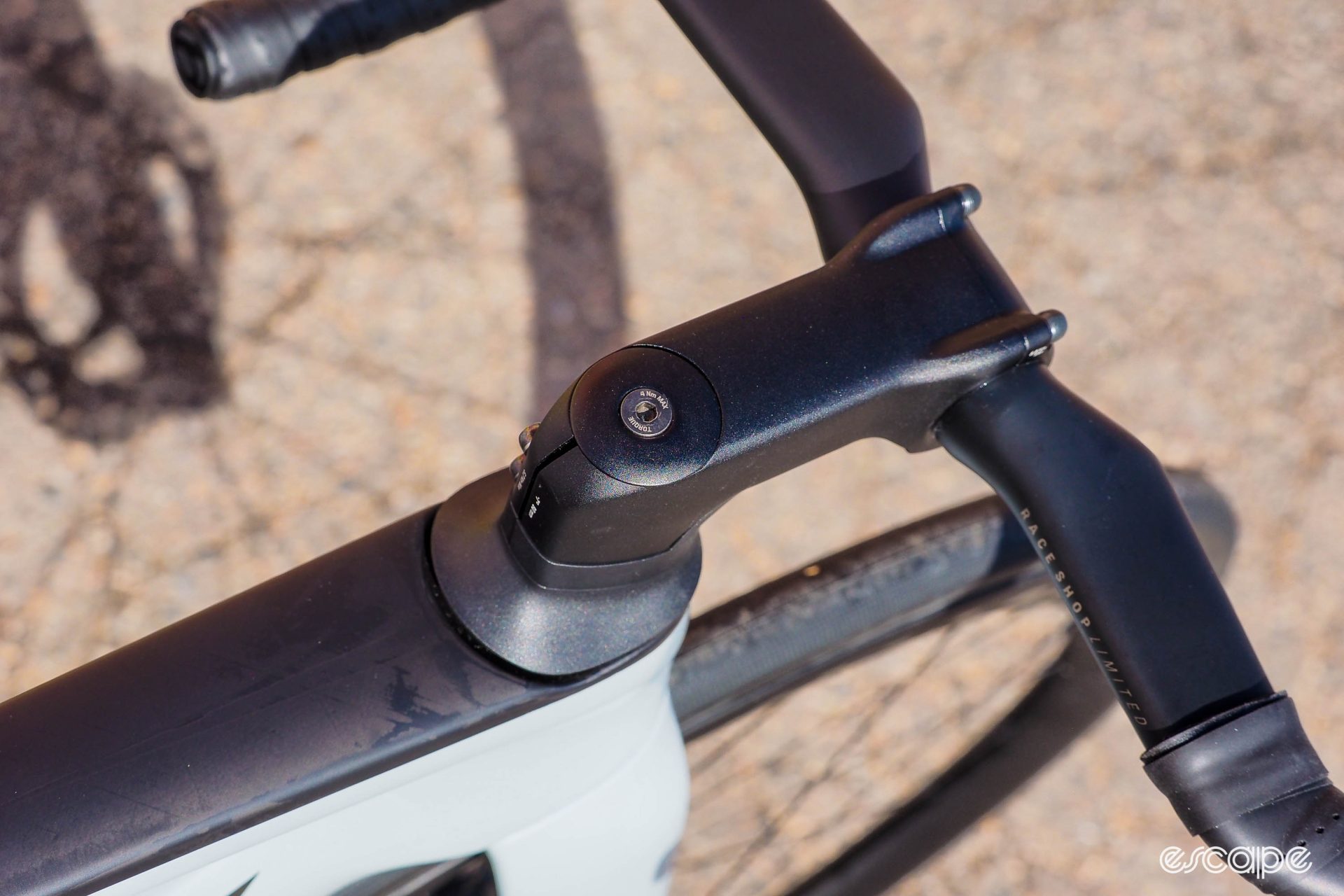
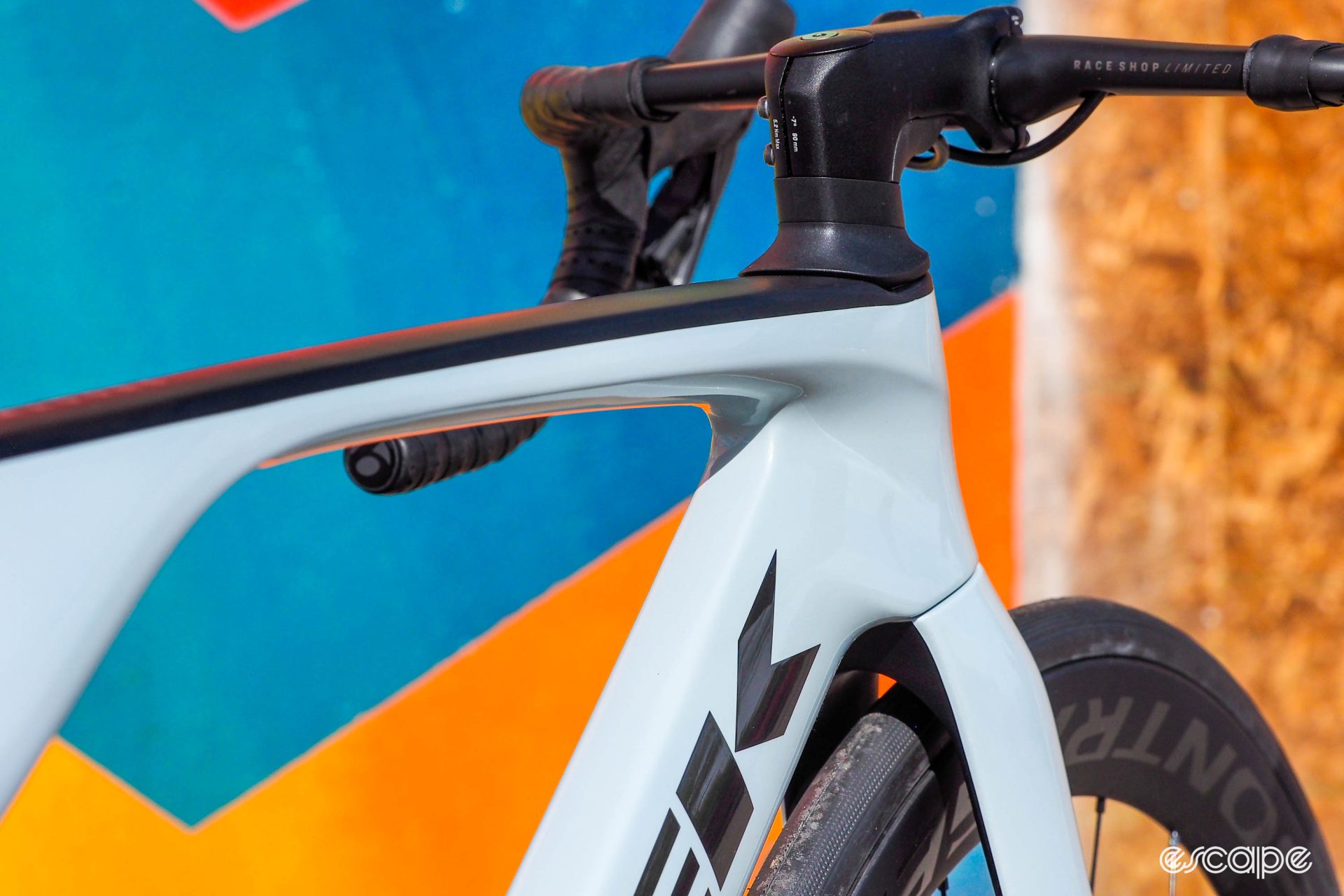
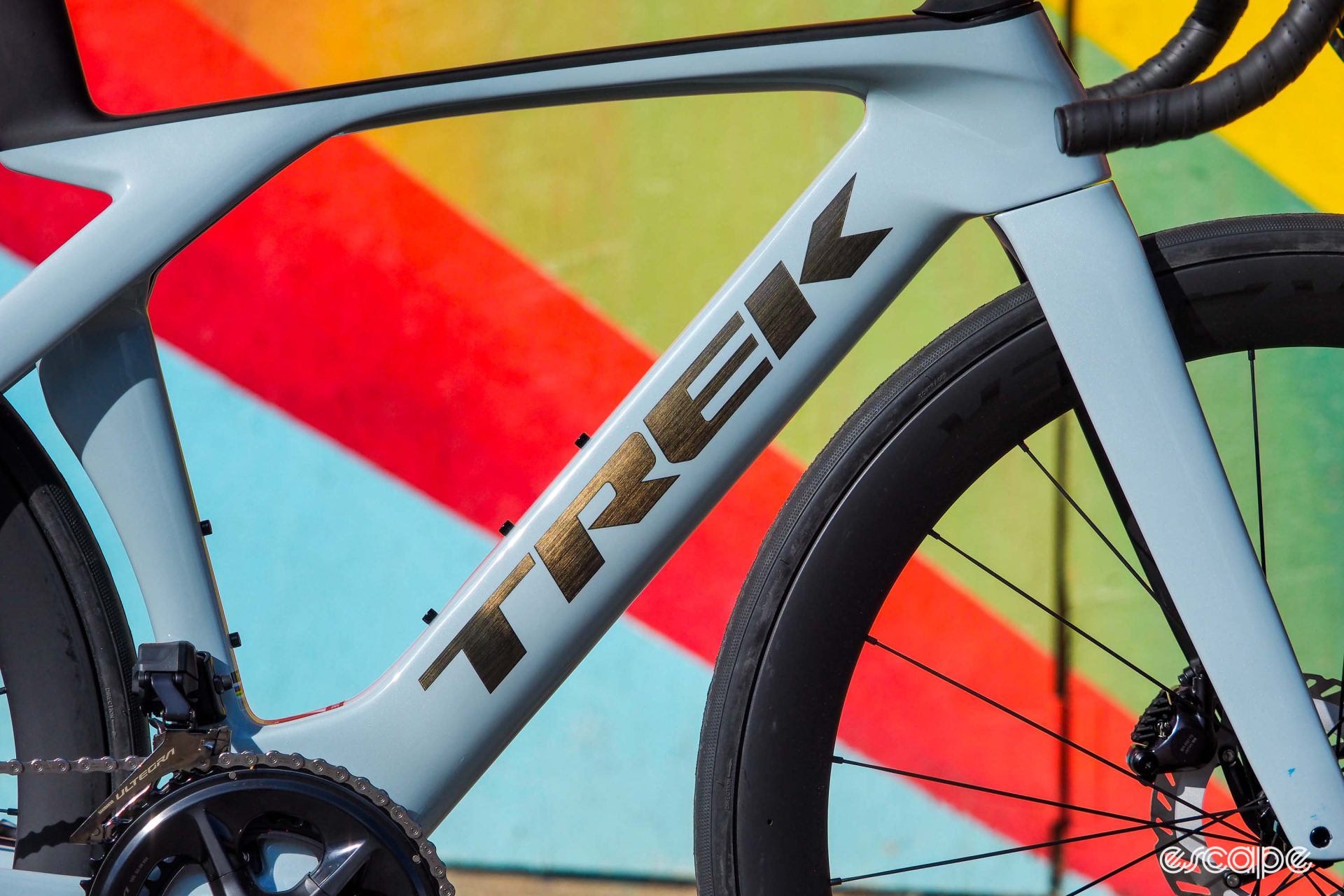
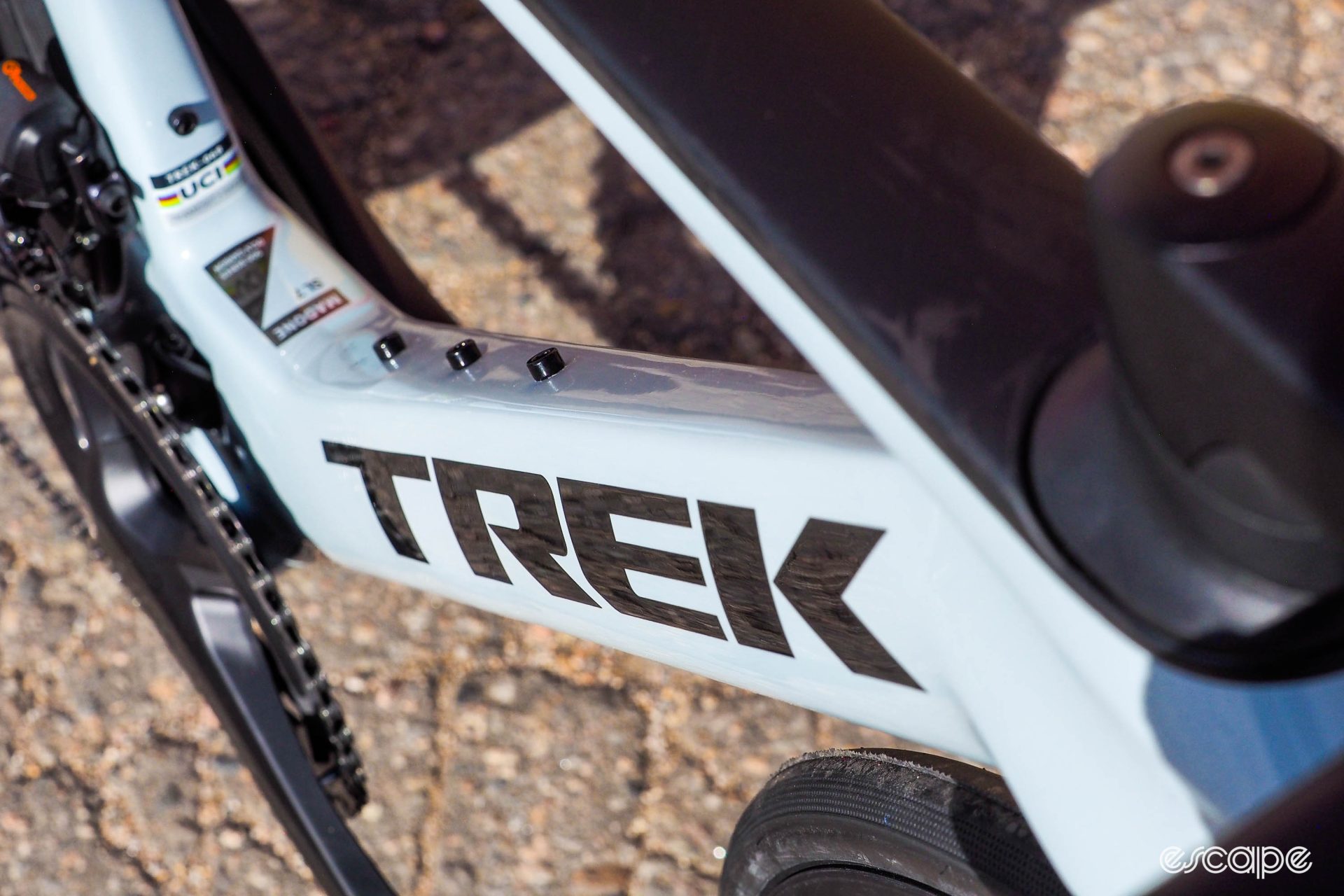
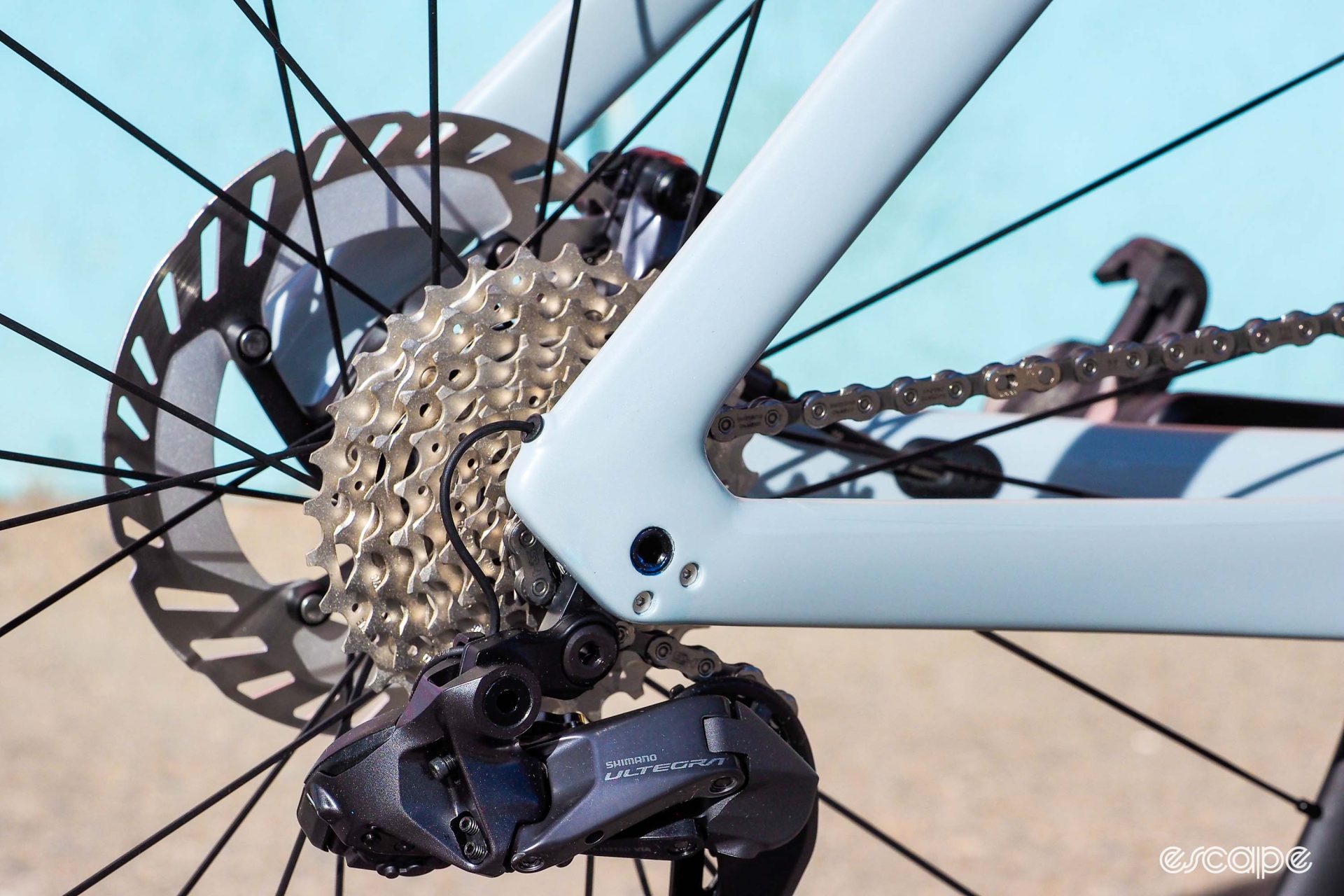
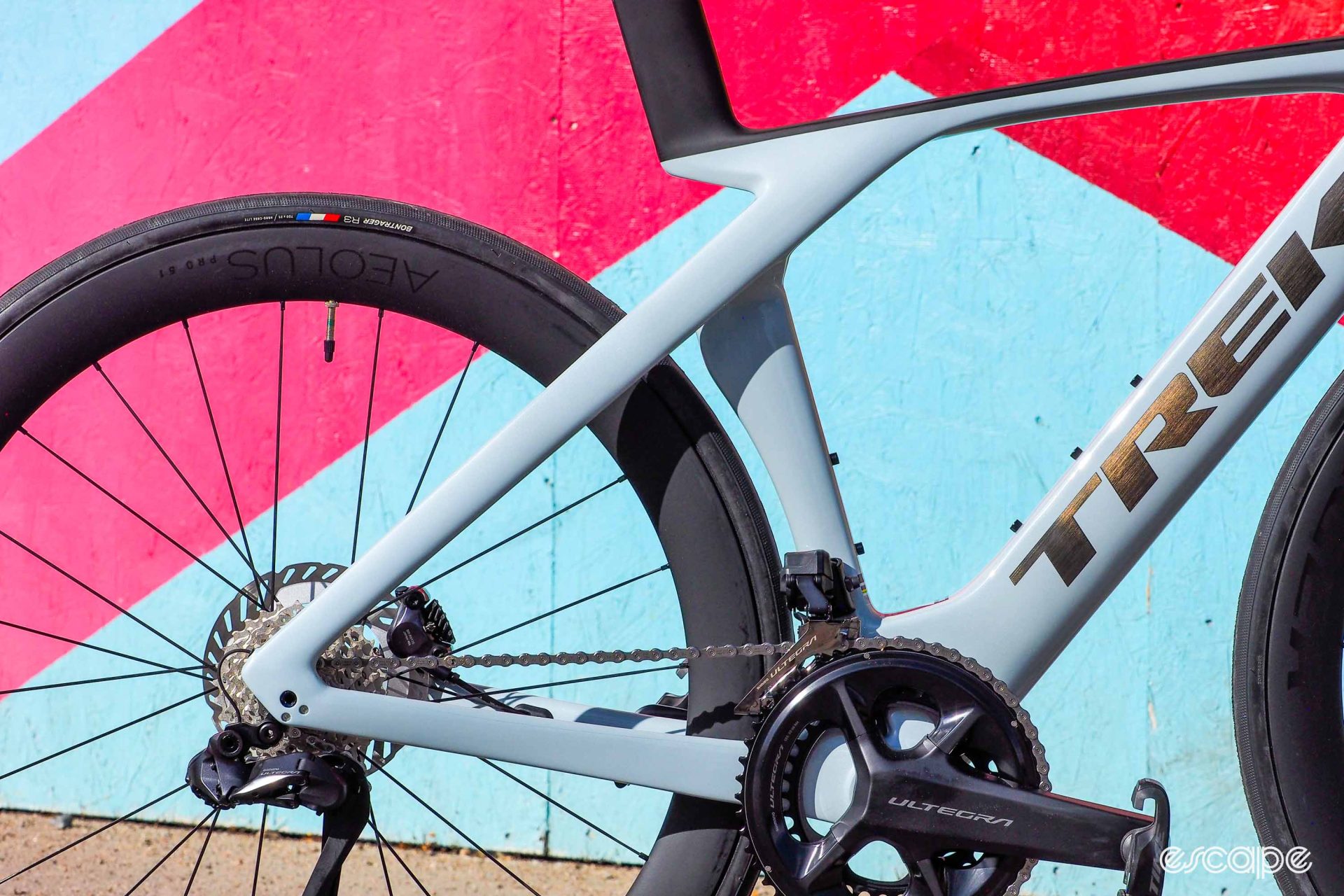
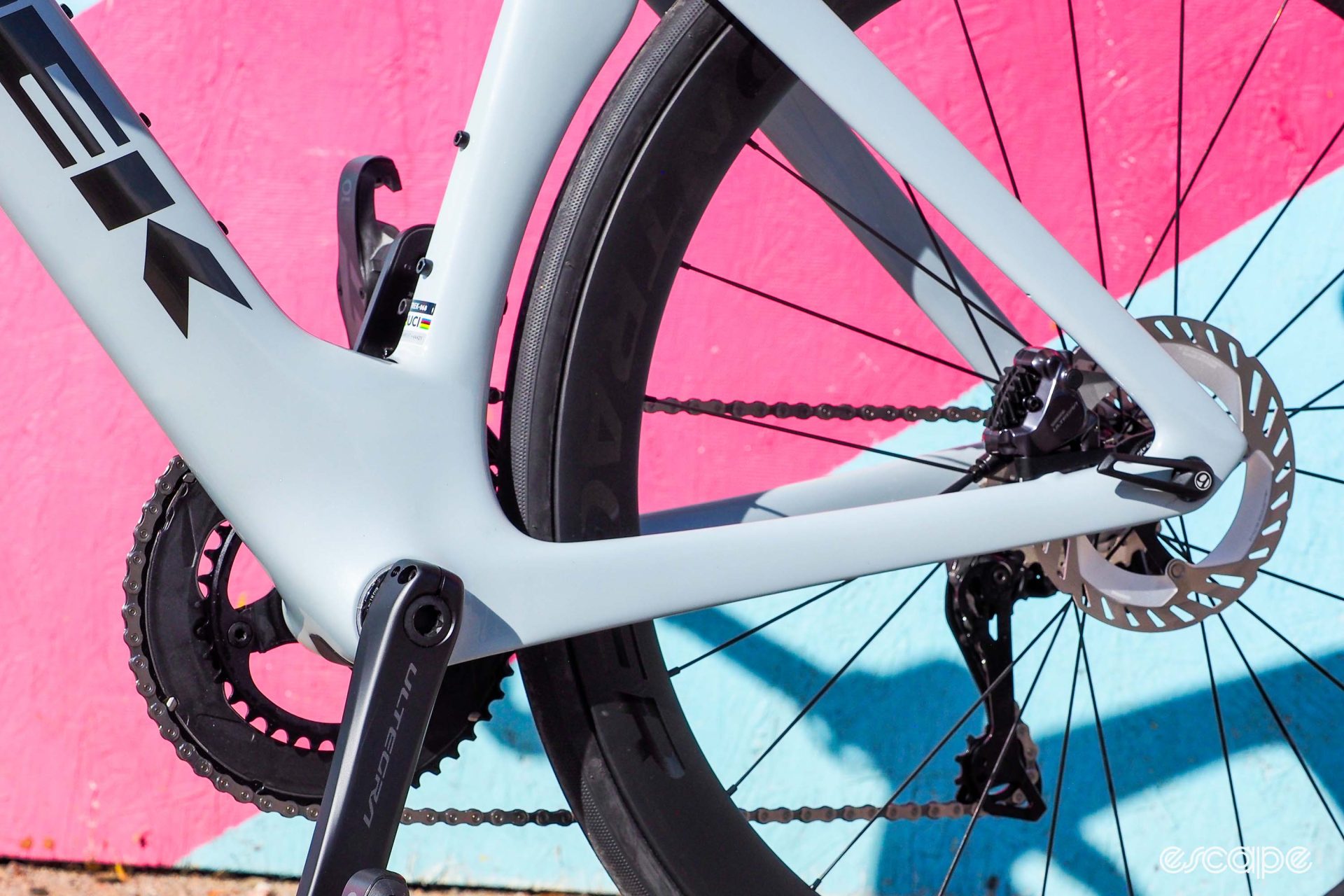

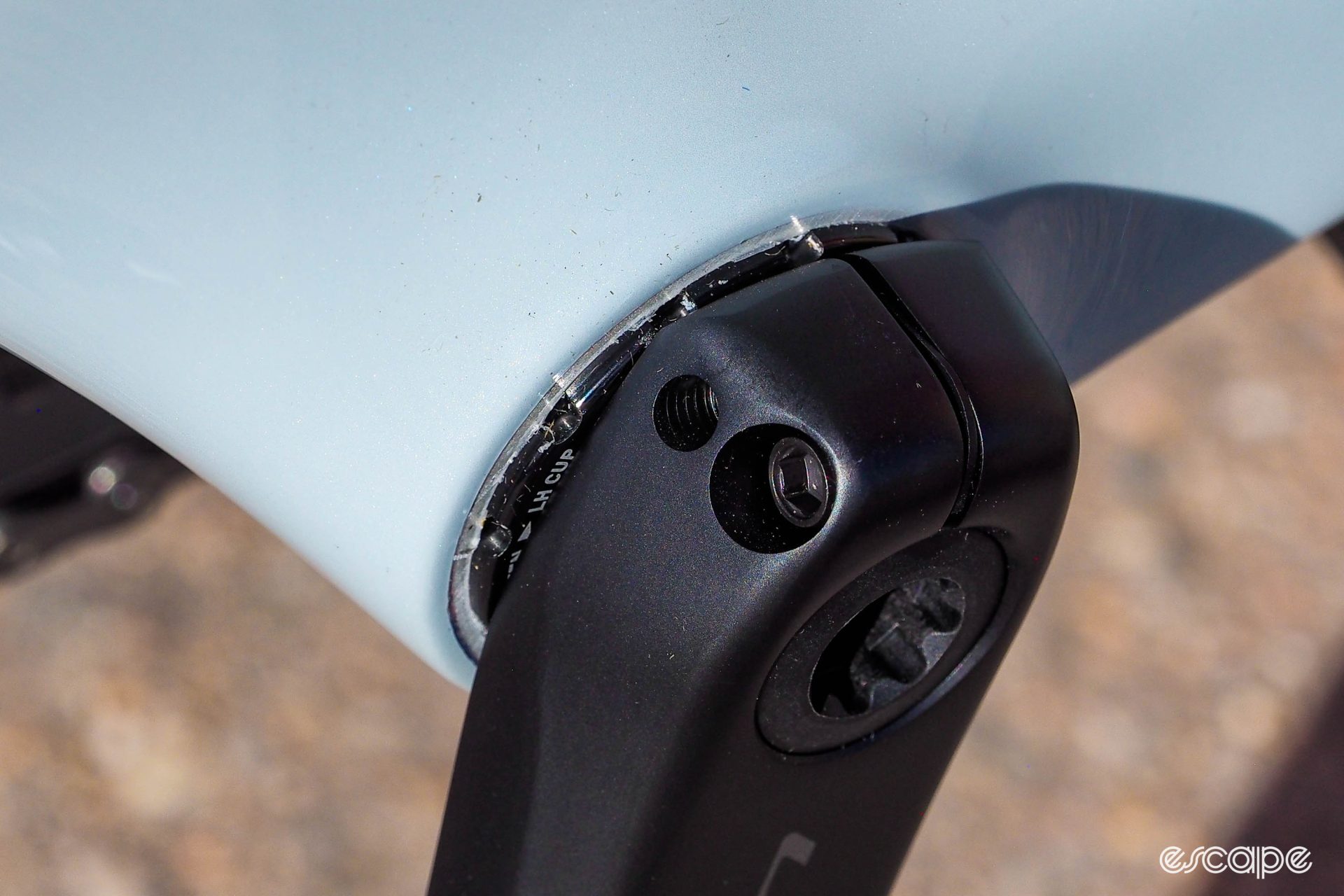
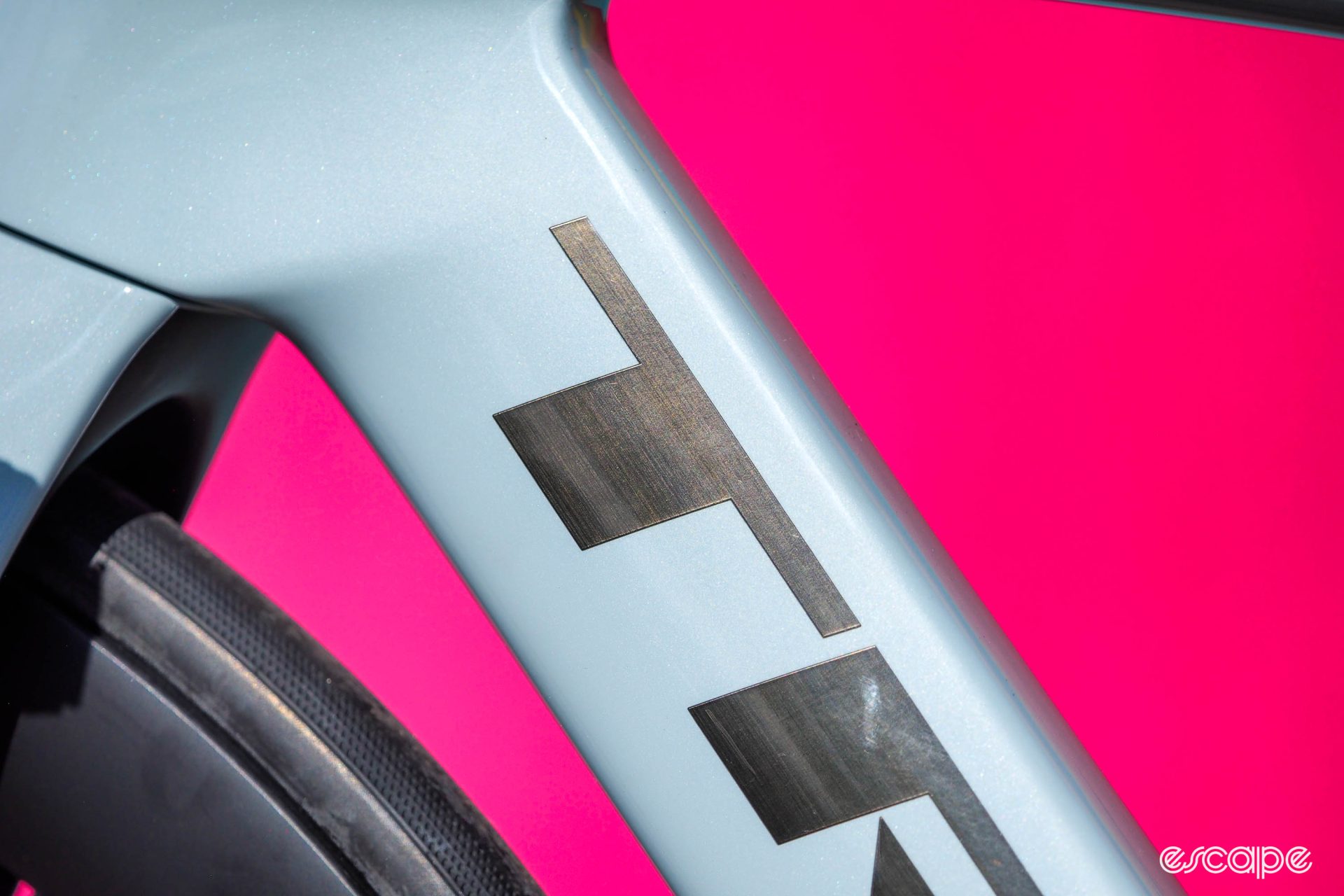
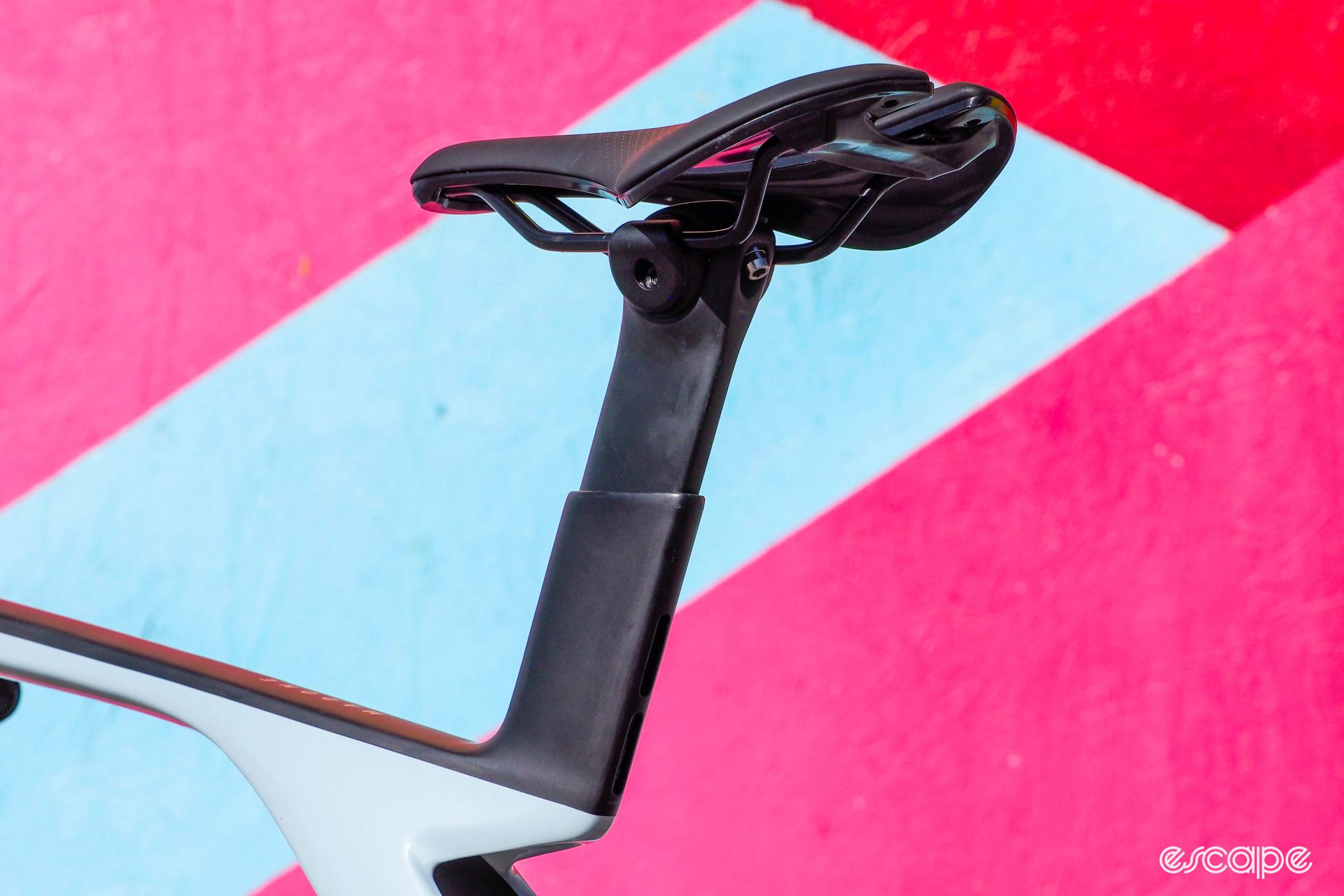
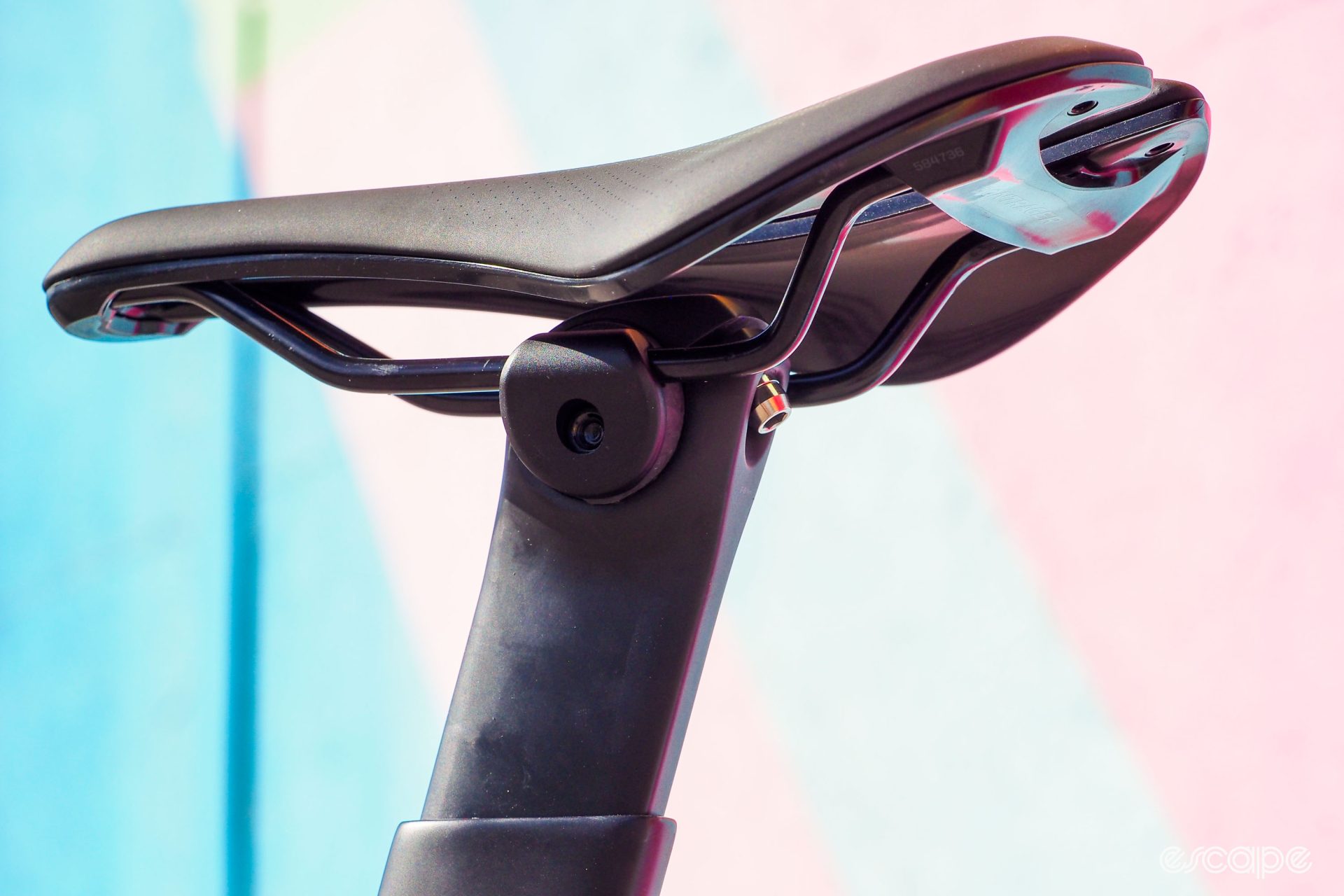
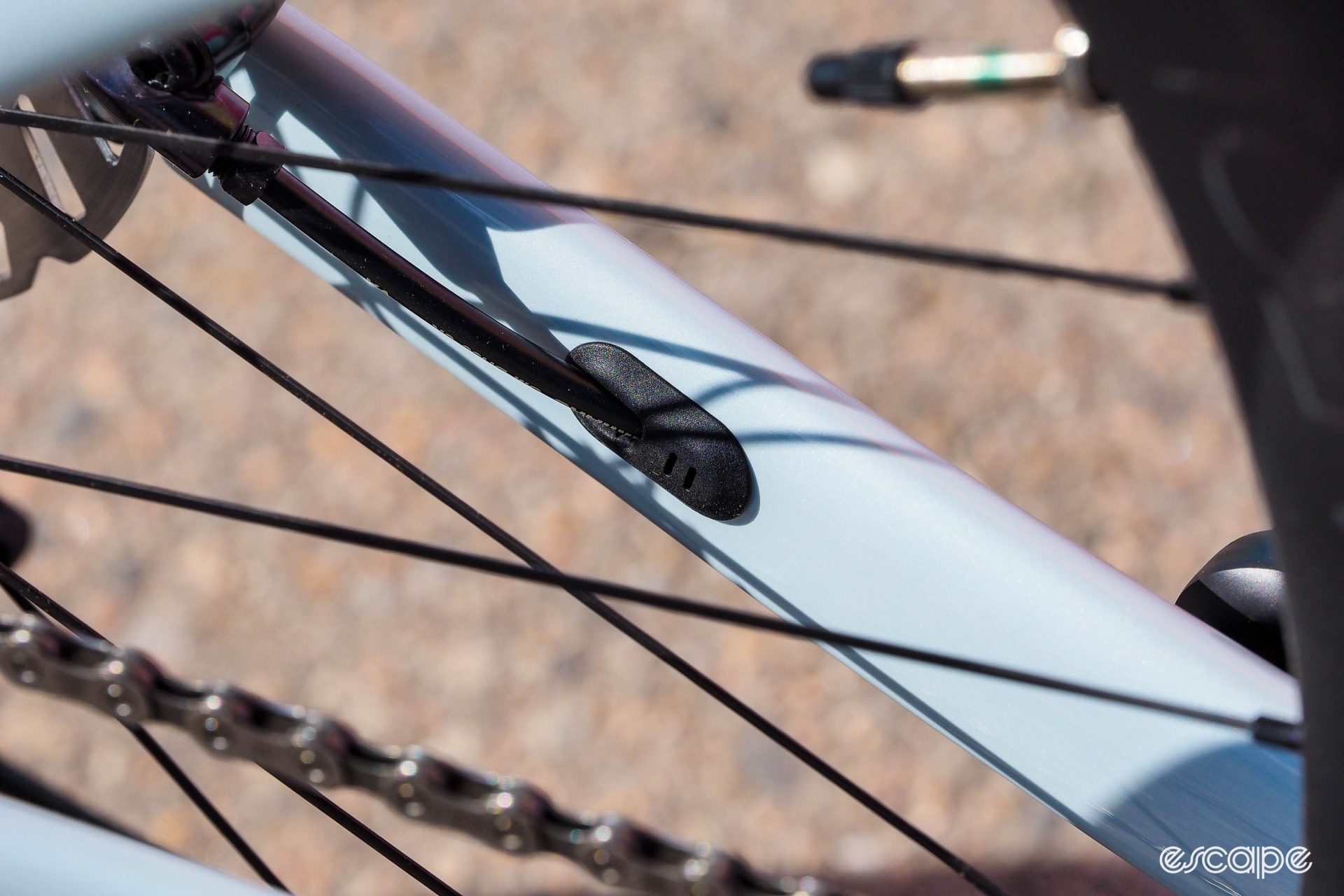
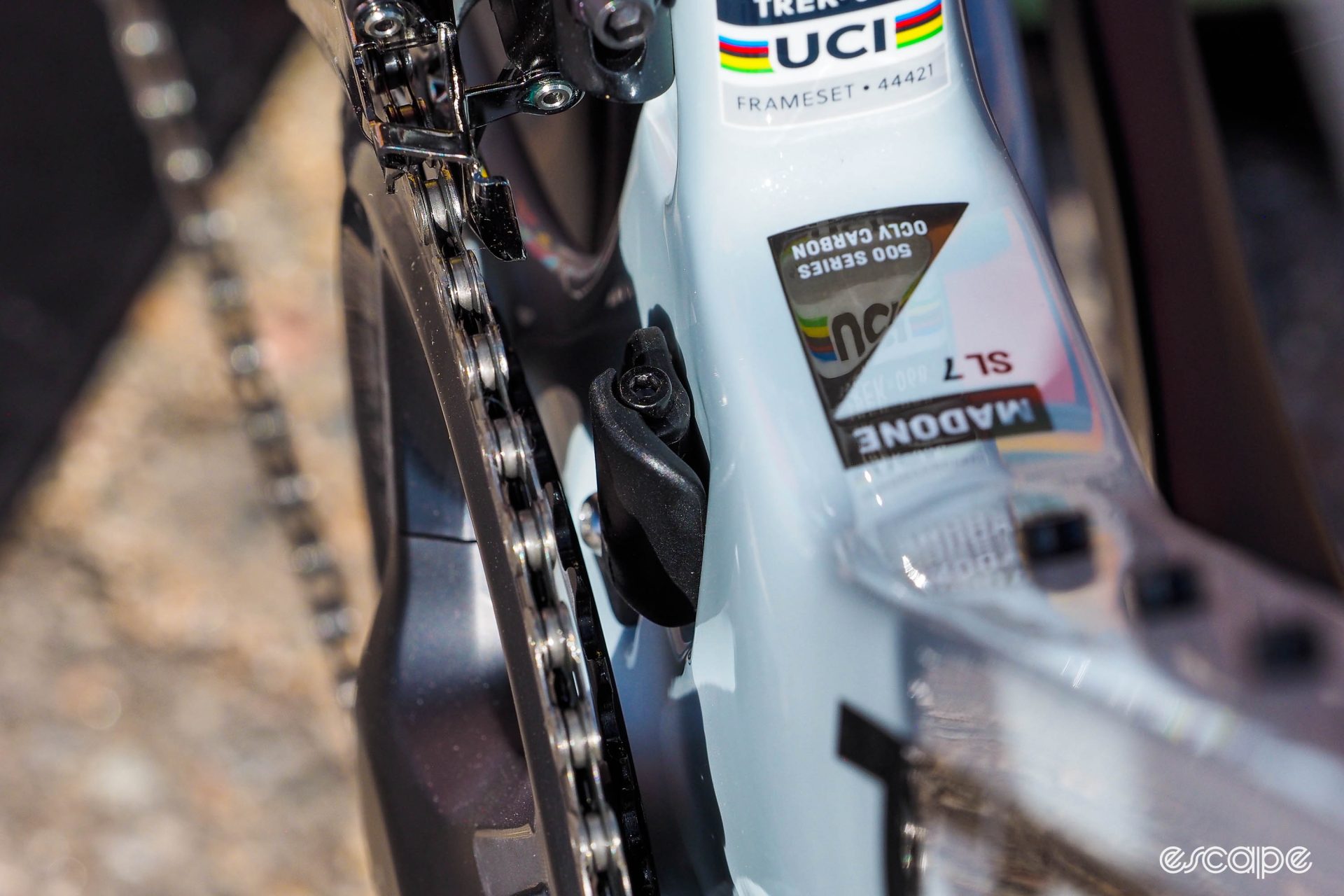
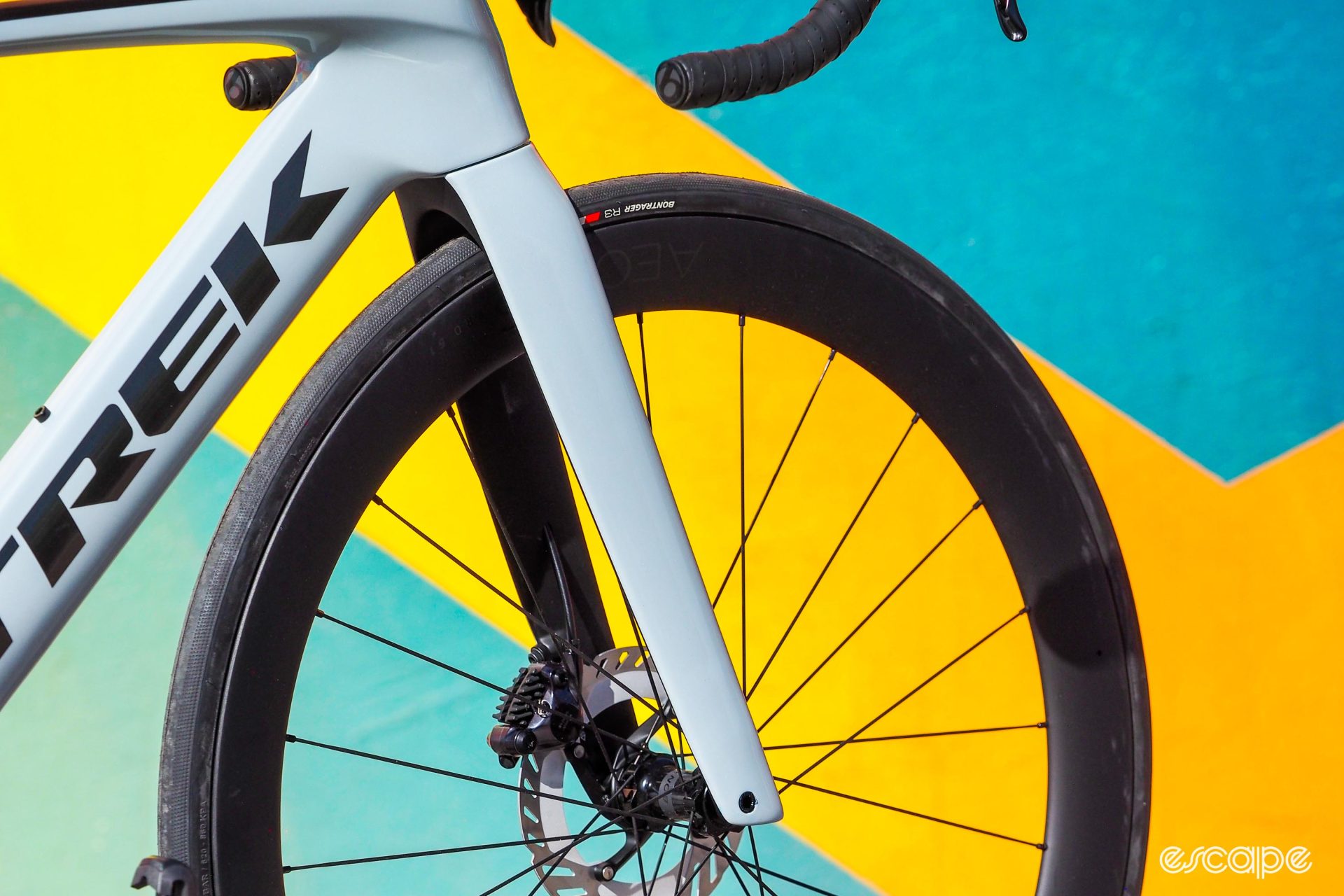
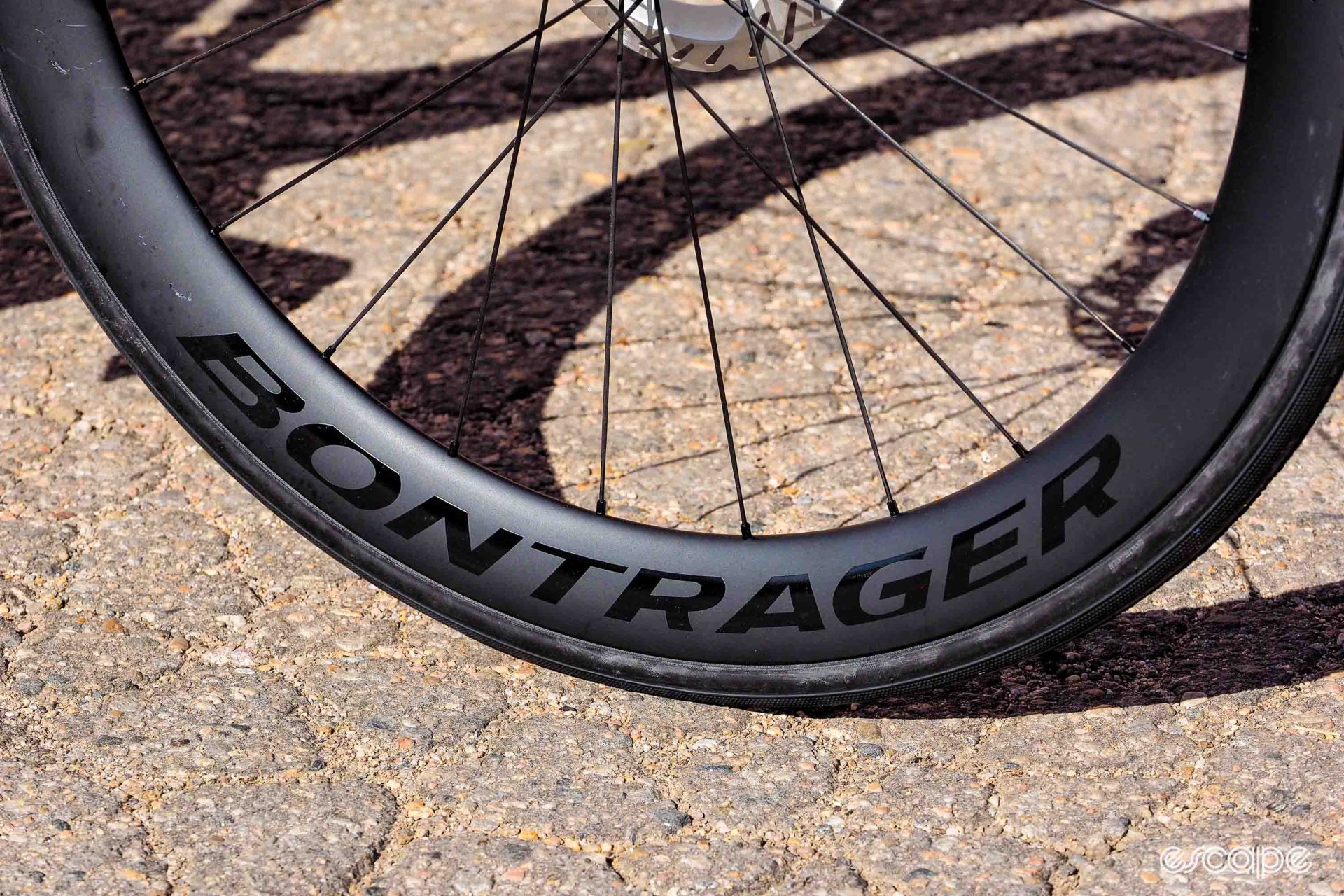
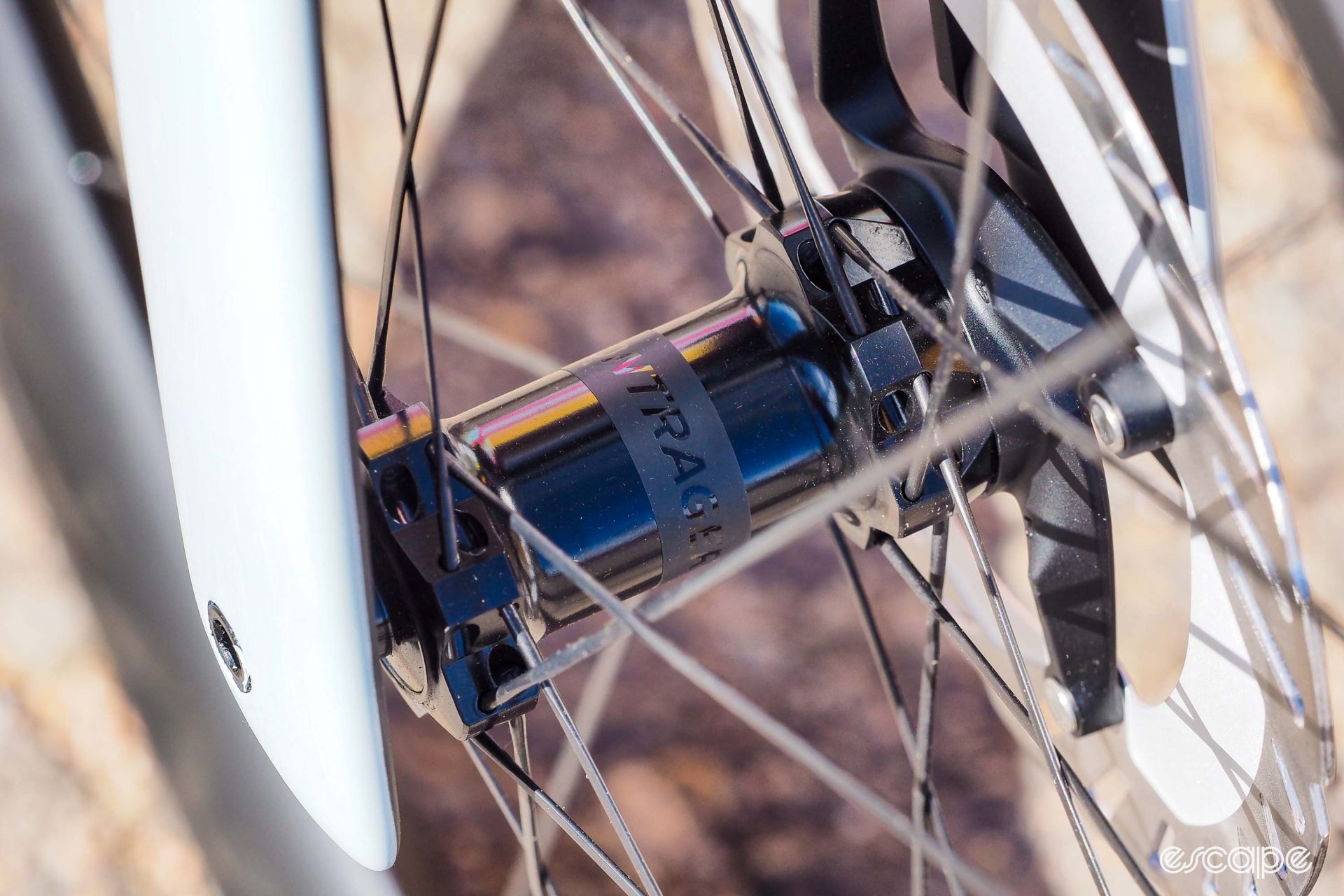
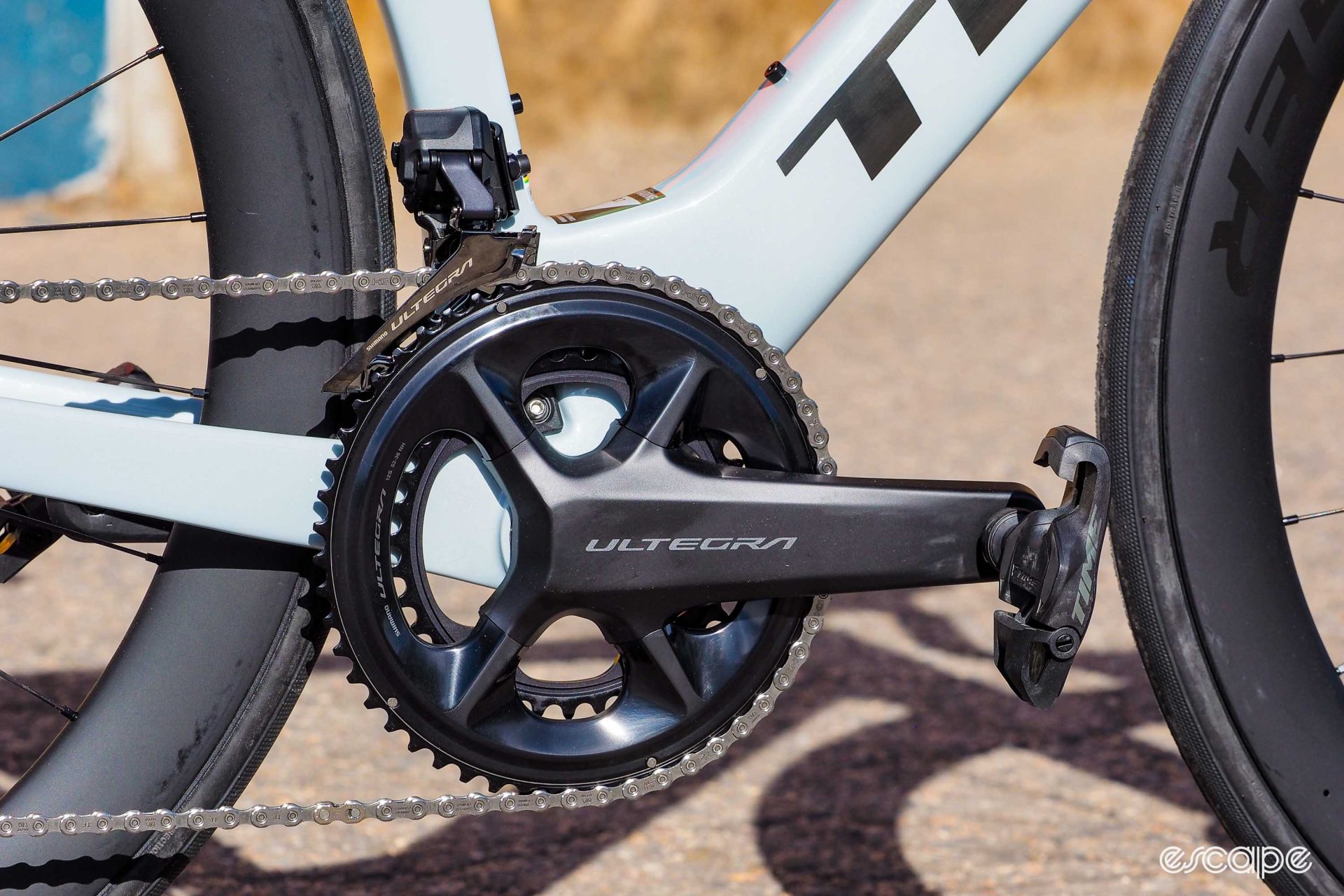
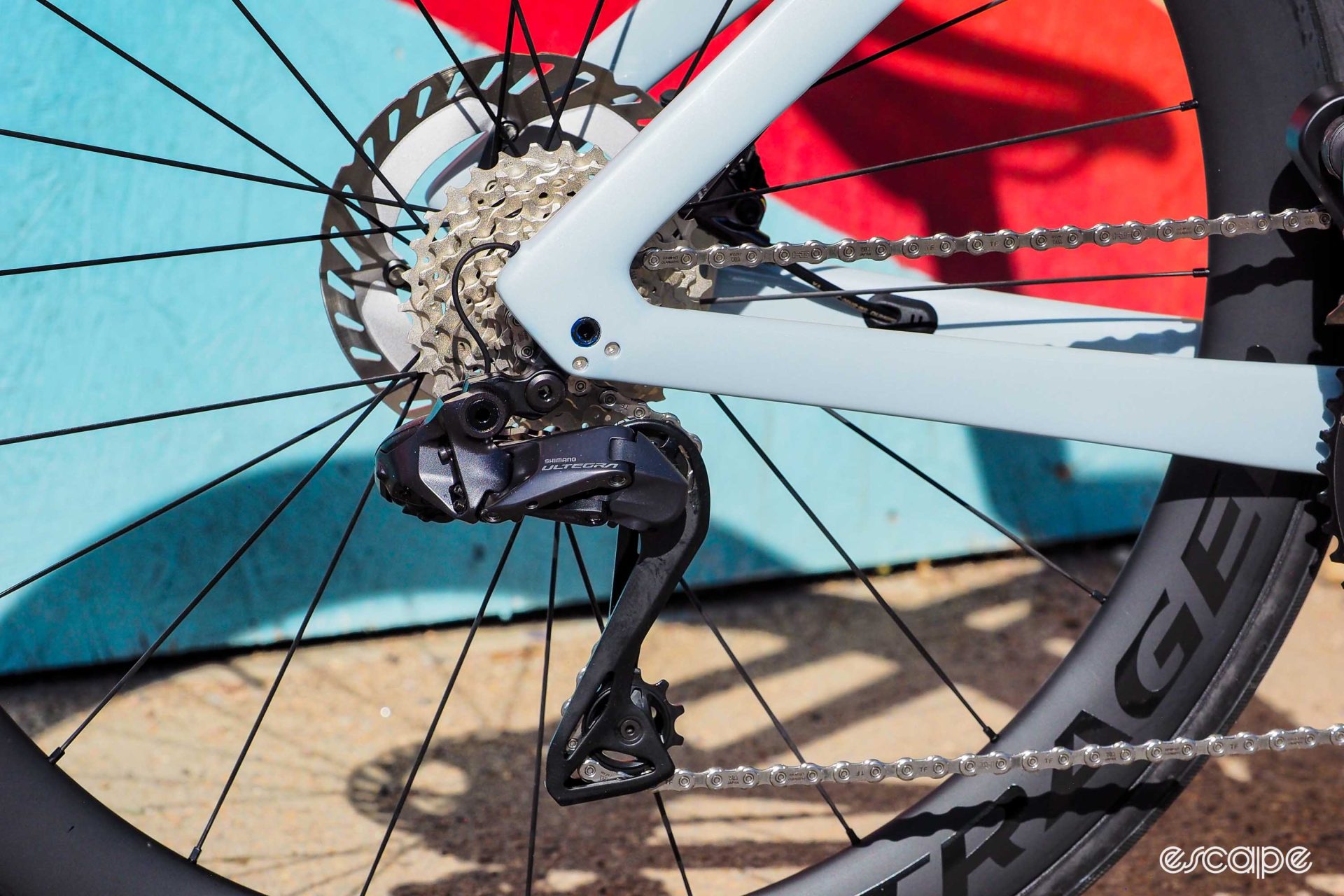
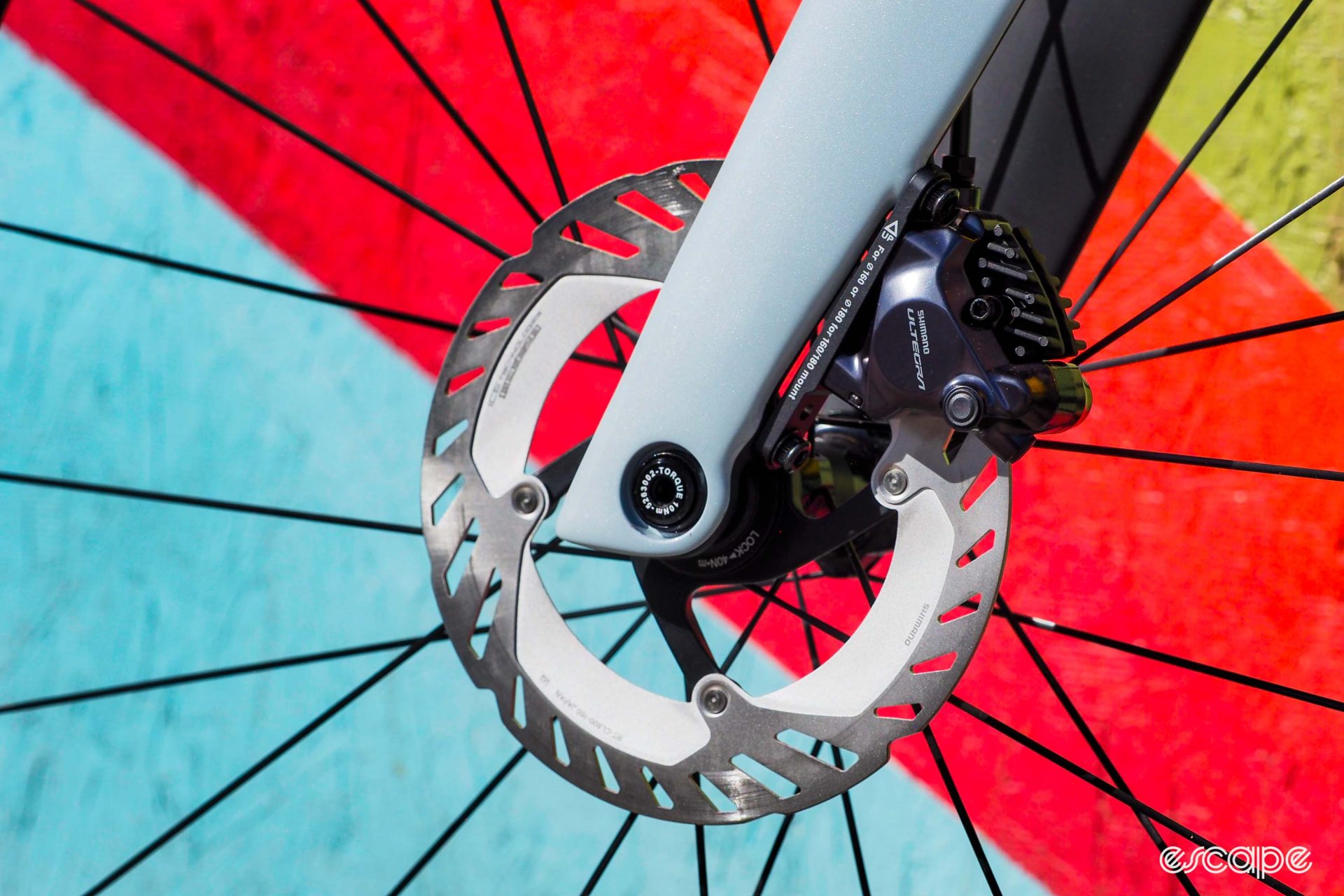
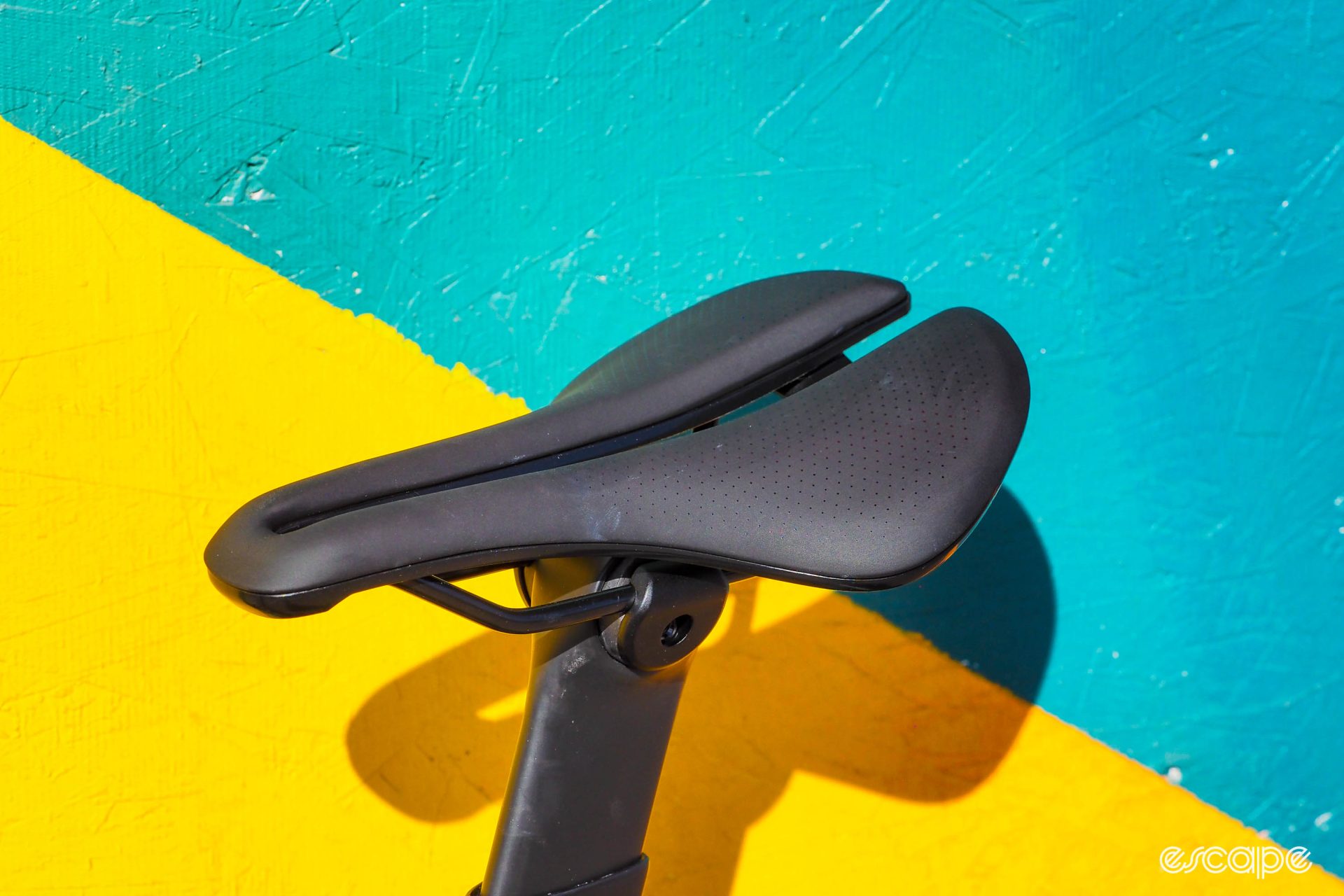
Did we do a good job with this story?

